General News - Project 63
Project 63 - Belated update part 2.
18th February 2021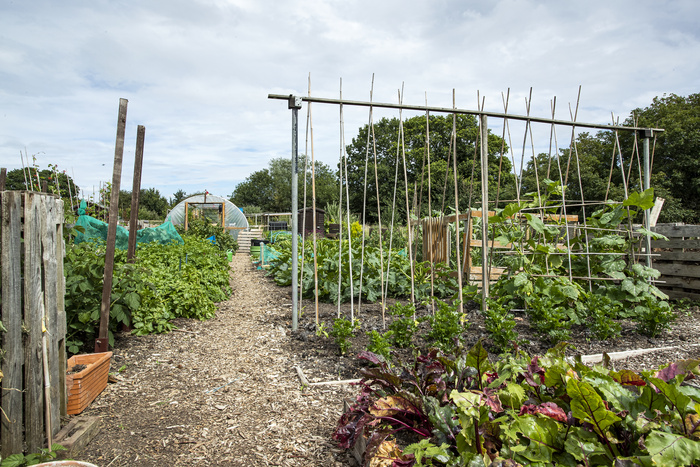
18th February 2021
In: Project 63

Following the first instalment, we head straight to the experimental or unusual vegetables for this year which proved to be a bit of a mixture. We decided to grow chick peas, which are not supposed to be the easiest crop to grow, another attempt with Edamame beans, which seemed to thrive the previous year, together with further tromboncino’s which were prolific the previous year and tried a different variety. Whilst not really an experimental vegetable, we planted a couple of Marquis de Provence squashes, and these produce 5-6 really large fruit each weighing almost 18-20 lbs.
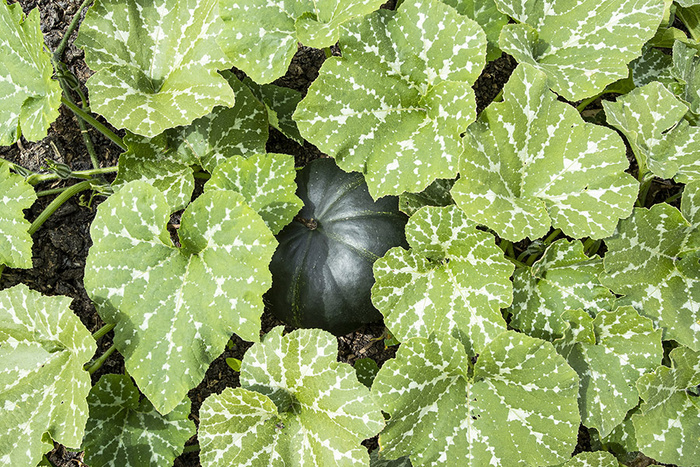
Finally, I was desperate to try growing some peanuts, having watched a plot holder in the Midlands turn quite a large area of his plot over to the crop, and started in the poly tunnel. Unfortunately, the mice really liked the peanuts, and despite various attempts chewed through the base of the roots and dug most up, so preventative measures were required, further plants sown, and eventually managed to get 18 plants to prosper during the course of the year. The outcome for the peanuts was eventually very disappointing, and whilst we did harvest and indeed eat several nuts from our attempt, the productivity was a little shabby, which is probably more a measure of my lack of knowledge of how to cultivate them.
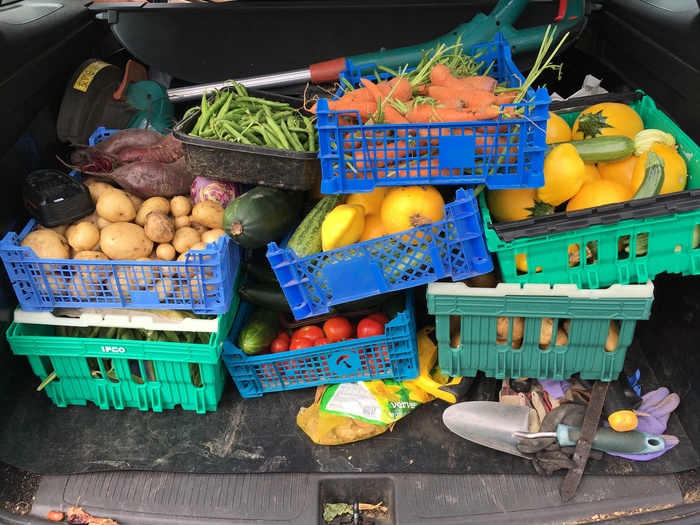
Similarly disappointing were the chick peas, although we did manage to get quite a considerable crop from one of the raised beds, it was probably insufficient to consider them as a principal item to grow. The peas have been kept and planning to plant next year or maybe the year after to see if we can improve on the output.
The Edamame beans, supposedly not susceptible to disease, rust or other, proved not to be, and most failed this year, and once again plan to have another bash with these next year. The Cavalo, Buttonhole Kale, and the Trombo’s have been prolific, as were the Marquis squashes already mentioned.
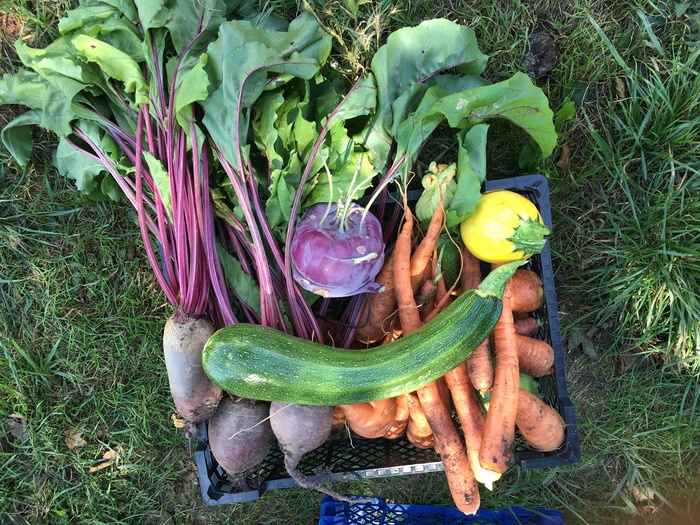
One of the other experiments tried this year was Kallalloo. These colourful spinach like plants were suggested to be ideal pick and come again style growers. Whilst they did produce, and come again (and were very tasty), not sure these are sufficiently voluminous to warrant space to grow seriously apart from personal interest, they also had a magnetic effect on slugs and snails and some pretty serious preventative approaches were required to stop the junior and then slightly bigger plants being demolished.
At the start of the year, quite a bit of energy was invested in measures to protect the plot from the ravages of the ever increasing population of black and white fiends at the base of the allotment site. This seemed to work quite well, although the defences were breached on a couple of occasions as the Badgers went after a couple of bees nests in the manure bins.
In addition to the crops grown, tested and tasted, the plot welcomes a host of varied wildlife through the year, and a further article featuring some of the visitors to the plot to follow.
Planning is now well under way for the fifth season for project 63. A trailer load of manure has been delivered and just requires spreading (no digging on site - which is a joy for the back!). Garlics, normal and Elephant together with Broad Beans have already been planted in anticipation of another bumper year in 2021. The only difficult thing now is what experimental vegetables to grow. Having got carried away and grown multiple crops over the past 3-4 years, it’s proving quite difficult to decide exactly what to try next. It may be this year, we just stick to the ordinary, and leave the extra ordinary.

Finally, I was desperate to try growing some peanuts, having watched a plot holder in the Midlands turn quite a large area of his plot over to the crop, and started in the poly tunnel. Unfortunately, the mice really liked the peanuts, and despite various attempts chewed through the base of the roots and dug most up, so preventative measures were required, further plants sown, and eventually managed to get 18 plants to prosper during the course of the year. The outcome for the peanuts was eventually very disappointing, and whilst we did harvest and indeed eat several nuts from our attempt, the productivity was a little shabby, which is probably more a measure of my lack of knowledge of how to cultivate them.

Similarly disappointing were the chick peas, although we did manage to get quite a considerable crop from one of the raised beds, it was probably insufficient to consider them as a principal item to grow. The peas have been kept and planning to plant next year or maybe the year after to see if we can improve on the output.
The Edamame beans, supposedly not susceptible to disease, rust or other, proved not to be, and most failed this year, and once again plan to have another bash with these next year. The Cavalo, Buttonhole Kale, and the Trombo’s have been prolific, as were the Marquis squashes already mentioned.

One of the other experiments tried this year was Kallalloo. These colourful spinach like plants were suggested to be ideal pick and come again style growers. Whilst they did produce, and come again (and were very tasty), not sure these are sufficiently voluminous to warrant space to grow seriously apart from personal interest, they also had a magnetic effect on slugs and snails and some pretty serious preventative approaches were required to stop the junior and then slightly bigger plants being demolished.
At the start of the year, quite a bit of energy was invested in measures to protect the plot from the ravages of the ever increasing population of black and white fiends at the base of the allotment site. This seemed to work quite well, although the defences were breached on a couple of occasions as the Badgers went after a couple of bees nests in the manure bins.
In addition to the crops grown, tested and tasted, the plot welcomes a host of varied wildlife through the year, and a further article featuring some of the visitors to the plot to follow.
Planning is now well under way for the fifth season for project 63. A trailer load of manure has been delivered and just requires spreading (no digging on site - which is a joy for the back!). Garlics, normal and Elephant together with Broad Beans have already been planted in anticipation of another bumper year in 2021. The only difficult thing now is what experimental vegetables to grow. Having got carried away and grown multiple crops over the past 3-4 years, it’s proving quite difficult to decide exactly what to try next. It may be this year, we just stick to the ordinary, and leave the extra ordinary.
Project 63 - Belated update
29th January 2021
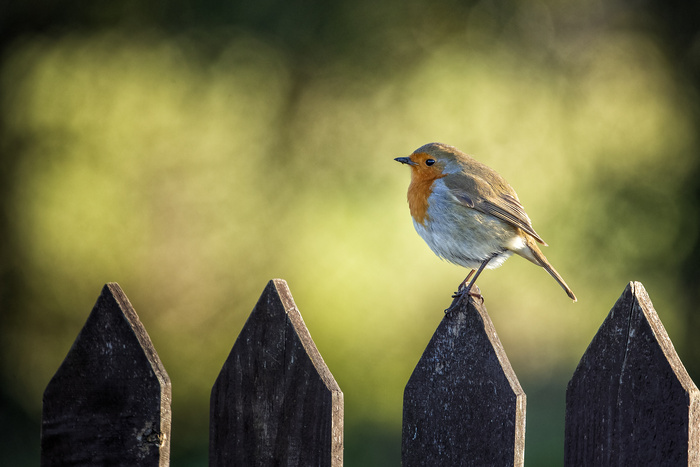
A new year has arrived. January is not the fairest of months, and as I tend to be a bit of a warm-weather plot holder, proves to be a month of essential tasks only, including any maintenance. Some early sowing took place in early November, Broad beans, garlic and elephant garlic, and a delivery of well rotted manure from December is now in the process of gradually being spread across the plot under the watchful eye of a friendly robin (pictured above).
It occurred to me during this tedious task of the remiss approach to updating information for the project in 2020, with no posts undertaken. One of the principal reason for this is the generosity of Association members in their willingness to contribute articles for the website, and we have had some amazing and humorous compositions to keep us all smiling during the course of this year. From badger averse gnomes, to shed alarms and annoyed neighbours, to the inability to complain due to new neighbours now taking good care of the plot next door. These articles have provided a little insight into the community on site and have proved popular.
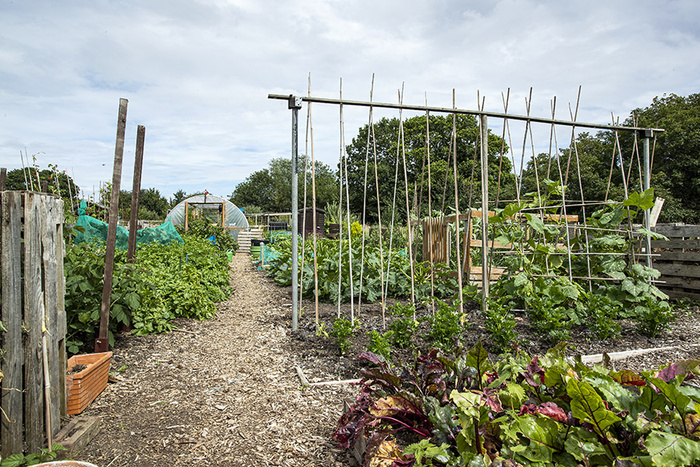
Despite all this, project 63 has ticked over through the year, with no disruptions for the cricket world cup as last, and even managed to get Sanctus, the charity this project principally supports to contribute an article to the web site detailing what happens to the produce we donate.
Generous donations from various plot members, together with the Wilderness Foundation have once again expanded the contribution, which at the height of the growing season can reach 11-12 mushroom trays full of fruit and vegetables.
As various readers of previous posts will know, the project is also used as an excuse to grow some more experimental crops, this year being no exception, and the relative successes and failures will be included in this and future updates for the project all of which take a view of the year. There are a couple of instalments.
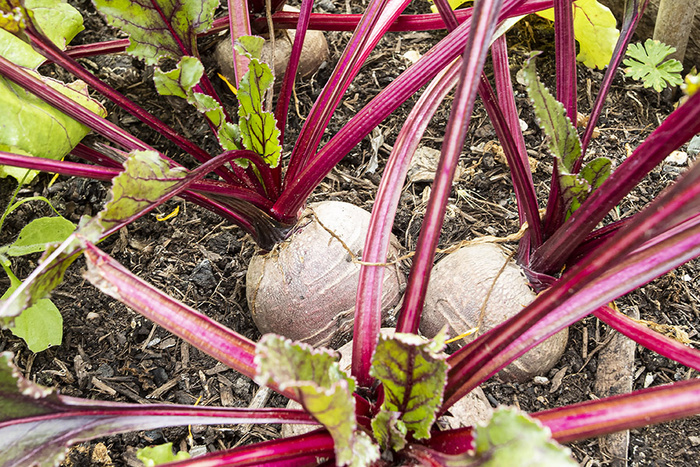
This year of course has been a really strange year, with COVID, lockdown and various restrictions on general society prevailing. However, right at the very outset the government expressed how ideal Allotments were in terms of allowing for personal exercise and by their very nature the ability to social distance, and the site as a whole saw various new members, plus perhaps a little more input to the various plots than previous years. A host of positive commentaries through the year were overheard about how good the site looked.
As with previous years, project 63 was divvied up to ensure the most productive vegetables took priority. Broad beans and garlics, planted late the previous year, followed by early potatoes, and then other varieties to follow, onions generally the starting point for the growing year. Broad beans were planted where the raspberries had been dug out the previous year (their lack of productivity a significant factor), together with parsnips a little later to make use of quite a considerable area. Alex donated a couple of Cavalo Nero plants, plus Kalettes which along with Edamame beans made up the far side of the plot together with 10 new Glenn Ample Raspberry canes.
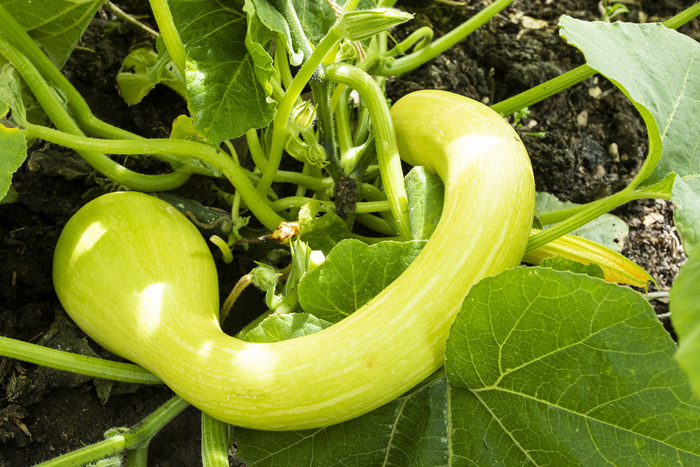
Two complete raised beds of carrots were sown, together with a bed of elephant garlic, and once the garlic removed, a host of dwarf beans, radicchio, beetroots followed on to allow a constant supply. The other side of the plot constituted various squashes, courgettes, tromboncinos, runner bean tepee, fennel, celeriac, sweet corn, Cavalo nero and buttonhole kale. The real star though was completely unexpected, and a donation from the Wilderness Foundation of a Jack O Lantern pumpkin which I was going to grow to carve for halloween turned out not to be as described, and was in fact an Atlantic Giant, and with very little attention grew, grew and continued to grow.
The poly tunnel housed various different varieties of tomato, and a host of beauty belle peppers which year after year have proved to be very productive. The last part of space in the poly tunnel was given over to one of four experimental crops this year, details of which to follow.
to be continued......
29th January 2021
In: Project 63

A new year has arrived. January is not the fairest of months, and as I tend to be a bit of a warm-weather plot holder, proves to be a month of essential tasks only, including any maintenance. Some early sowing took place in early November, Broad beans, garlic and elephant garlic, and a delivery of well rotted manure from December is now in the process of gradually being spread across the plot under the watchful eye of a friendly robin (pictured above).
It occurred to me during this tedious task of the remiss approach to updating information for the project in 2020, with no posts undertaken. One of the principal reason for this is the generosity of Association members in their willingness to contribute articles for the website, and we have had some amazing and humorous compositions to keep us all smiling during the course of this year. From badger averse gnomes, to shed alarms and annoyed neighbours, to the inability to complain due to new neighbours now taking good care of the plot next door. These articles have provided a little insight into the community on site and have proved popular.

Despite all this, project 63 has ticked over through the year, with no disruptions for the cricket world cup as last, and even managed to get Sanctus, the charity this project principally supports to contribute an article to the web site detailing what happens to the produce we donate.
Generous donations from various plot members, together with the Wilderness Foundation have once again expanded the contribution, which at the height of the growing season can reach 11-12 mushroom trays full of fruit and vegetables.
As various readers of previous posts will know, the project is also used as an excuse to grow some more experimental crops, this year being no exception, and the relative successes and failures will be included in this and future updates for the project all of which take a view of the year. There are a couple of instalments.

This year of course has been a really strange year, with COVID, lockdown and various restrictions on general society prevailing. However, right at the very outset the government expressed how ideal Allotments were in terms of allowing for personal exercise and by their very nature the ability to social distance, and the site as a whole saw various new members, plus perhaps a little more input to the various plots than previous years. A host of positive commentaries through the year were overheard about how good the site looked.
As with previous years, project 63 was divvied up to ensure the most productive vegetables took priority. Broad beans and garlics, planted late the previous year, followed by early potatoes, and then other varieties to follow, onions generally the starting point for the growing year. Broad beans were planted where the raspberries had been dug out the previous year (their lack of productivity a significant factor), together with parsnips a little later to make use of quite a considerable area. Alex donated a couple of Cavalo Nero plants, plus Kalettes which along with Edamame beans made up the far side of the plot together with 10 new Glenn Ample Raspberry canes.

Two complete raised beds of carrots were sown, together with a bed of elephant garlic, and once the garlic removed, a host of dwarf beans, radicchio, beetroots followed on to allow a constant supply. The other side of the plot constituted various squashes, courgettes, tromboncinos, runner bean tepee, fennel, celeriac, sweet corn, Cavalo nero and buttonhole kale. The real star though was completely unexpected, and a donation from the Wilderness Foundation of a Jack O Lantern pumpkin which I was going to grow to carve for halloween turned out not to be as described, and was in fact an Atlantic Giant, and with very little attention grew, grew and continued to grow.
The poly tunnel housed various different varieties of tomato, and a host of beauty belle peppers which year after year have proved to be very productive. The last part of space in the poly tunnel was given over to one of four experimental crops this year, details of which to follow.
to be continued......
Project 63 - End Year Update
31st December 2019
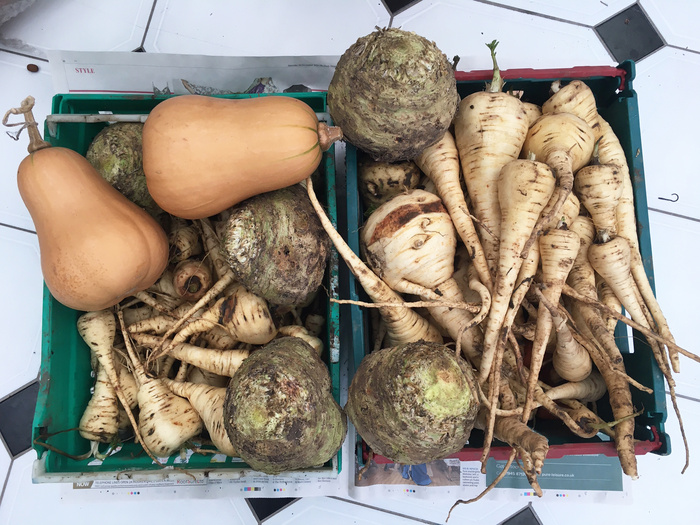
Perhaps it is fitting the last day of 2019 witnessed the last delivery of vegetables for the year to Sanctus, Chelmsford. Two large trays of parsnips, carrots, celeriac and butternut squash were gratefully received by the Charity which the Association continues to support.
To round off the year completely, the last experiment has now been harvested. The New Zealand Yam tubers were originally chitted over last winter, then planted late April / early May when the risk of frost at its lowest. 20 tubers were originally sewn, and from these original tubers we have harvested 6lb and 4 oz of yams.
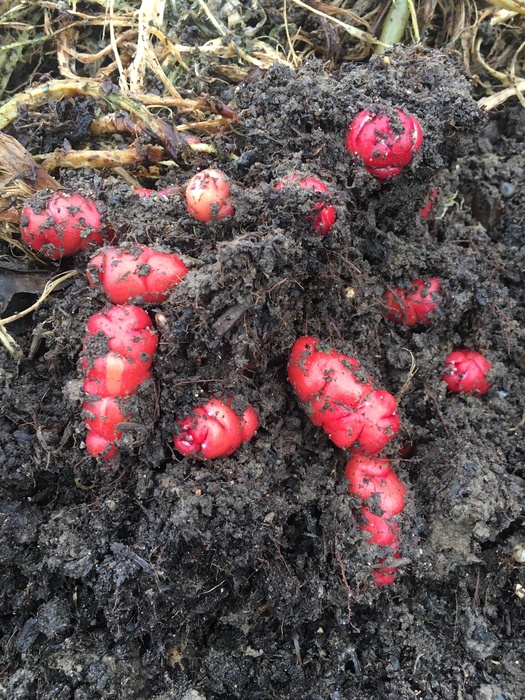
The Yam itself is pretty versatile, and a quick search via your favourite on line engine will produce an array of recipes or methods of cooking. For anyone who is interested in trying these, or in fact growing next season, we will leave some tubers at the trading hut when it re opens on Saturday. Please enquire with Tony.
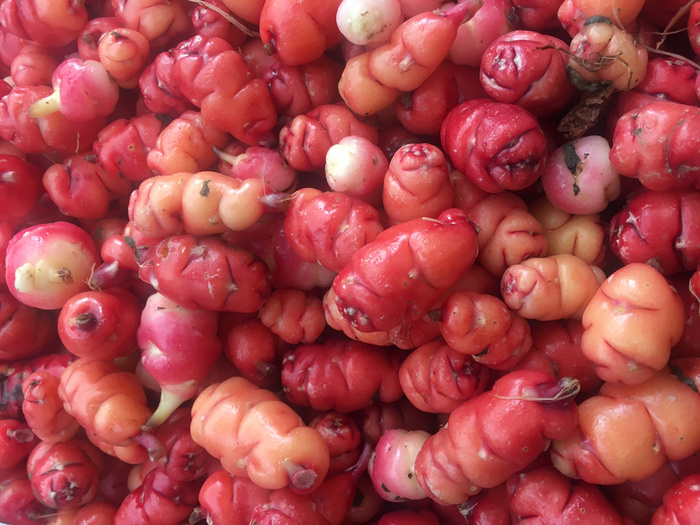
The biggest disappointment this year was the fruit, especially raspberries. We inherited quite a number of summer and autumn canes, and last year we gave the stock one further year to see if they would produce following a couple of poor years fruiting. This year proved to be no different, and at the end of the fruiting season we took the radical decision to start again. Removing the entire existing stock, we have re planted ten new canes of Glenn Ample, and whilst this will require patience for a year, hope this will provide us a better return moving forward the following season.
At the same time we decided to experiment with a self fertile Issai, Kiwi Berry, and it will be interesting to see how this progresses over the course of the year.
This years experiment with Tromboncino proved to be a success, with quite significant sized fruit being tried by various plot holders, and also received well by Sanctus. We plan to continue with these as they produce in volume, the squashes last (we still have one which looks fresh as a daisy from August in the garage). Unfortunately the same cannot be said for the Melon's, two of which turned out not to be melon's at all! The elephant garlic produced 10 huge bulbs (from 12 planted) and we have used these to plant up further over winter this year along with traditional garlic. The Padron Peppers were once again successful, and fruited right through to the beginning of November in the poly tunnel.
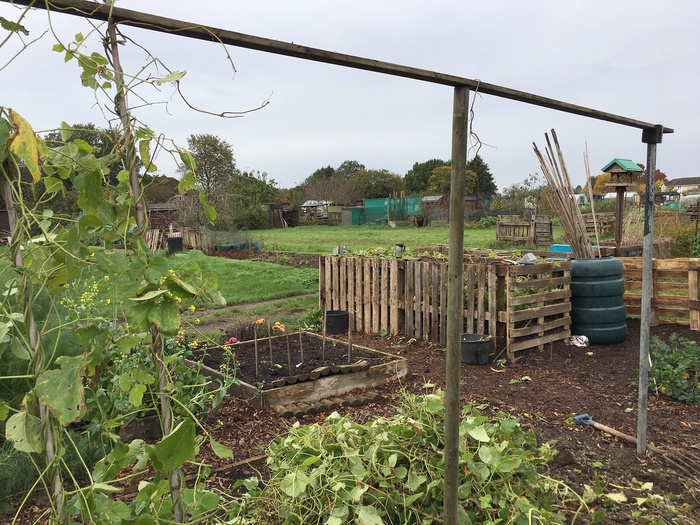
Over the last couple of months the project 63 site and poly tunnel has been cleared and crucially all the green waste has been cut up finely for composting. The annual manure delivery has taken place, and as we are experimenting with the Charles Dowding no dig method, have spread a thick layer of manure on one side of the plot, - the plan is to grow root vegetables on the other side of the plot which was heavily manured last year, with the balance of crops on the no dig portion.
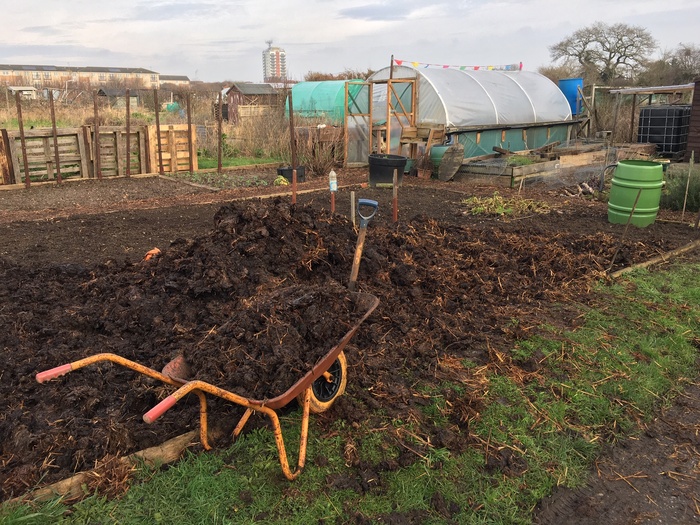
Seed orders for 2020 were placed a couple of months ago, and once again the plan is to experiment with a few different types of fruit and vegetables. Aside of the Kiwi Berry Watch this space for further updates and progress.
All that remains is to thank everyone who donated crops to the charity deliveries during the year, and wish everyone a happy, healthy and above all a productive allotment growing year, 2020.
31st December 2019
In: Project 63

Perhaps it is fitting the last day of 2019 witnessed the last delivery of vegetables for the year to Sanctus, Chelmsford. Two large trays of parsnips, carrots, celeriac and butternut squash were gratefully received by the Charity which the Association continues to support.
To round off the year completely, the last experiment has now been harvested. The New Zealand Yam tubers were originally chitted over last winter, then planted late April / early May when the risk of frost at its lowest. 20 tubers were originally sewn, and from these original tubers we have harvested 6lb and 4 oz of yams.

The Yam itself is pretty versatile, and a quick search via your favourite on line engine will produce an array of recipes or methods of cooking. For anyone who is interested in trying these, or in fact growing next season, we will leave some tubers at the trading hut when it re opens on Saturday. Please enquire with Tony.

The biggest disappointment this year was the fruit, especially raspberries. We inherited quite a number of summer and autumn canes, and last year we gave the stock one further year to see if they would produce following a couple of poor years fruiting. This year proved to be no different, and at the end of the fruiting season we took the radical decision to start again. Removing the entire existing stock, we have re planted ten new canes of Glenn Ample, and whilst this will require patience for a year, hope this will provide us a better return moving forward the following season.
At the same time we decided to experiment with a self fertile Issai, Kiwi Berry, and it will be interesting to see how this progresses over the course of the year.
This years experiment with Tromboncino proved to be a success, with quite significant sized fruit being tried by various plot holders, and also received well by Sanctus. We plan to continue with these as they produce in volume, the squashes last (we still have one which looks fresh as a daisy from August in the garage). Unfortunately the same cannot be said for the Melon's, two of which turned out not to be melon's at all! The elephant garlic produced 10 huge bulbs (from 12 planted) and we have used these to plant up further over winter this year along with traditional garlic. The Padron Peppers were once again successful, and fruited right through to the beginning of November in the poly tunnel.

Over the last couple of months the project 63 site and poly tunnel has been cleared and crucially all the green waste has been cut up finely for composting. The annual manure delivery has taken place, and as we are experimenting with the Charles Dowding no dig method, have spread a thick layer of manure on one side of the plot, - the plan is to grow root vegetables on the other side of the plot which was heavily manured last year, with the balance of crops on the no dig portion.

Seed orders for 2020 were placed a couple of months ago, and once again the plan is to experiment with a few different types of fruit and vegetables. Aside of the Kiwi Berry Watch this space for further updates and progress.
All that remains is to thank everyone who donated crops to the charity deliveries during the year, and wish everyone a happy, healthy and above all a productive allotment growing year, 2020.
Project 63 - Update
29th August 2019
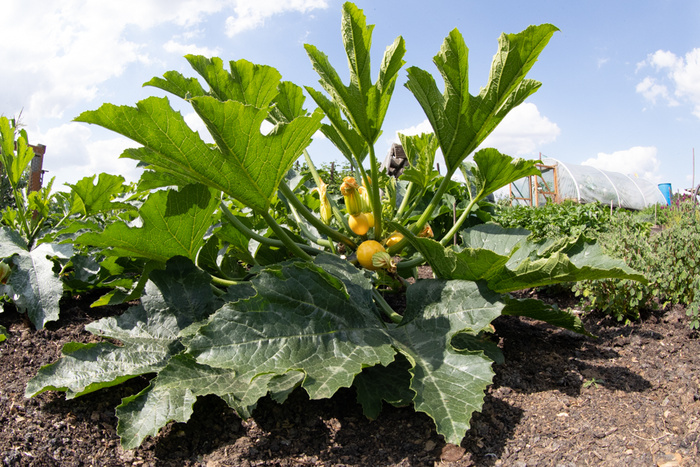
This article, rather lengthy, hopes to make up for the lack of information or posts in relation to progress with Project 63 during 2019. Apart from a request for help whilst one of the principal protagonists spent 6 weeks up and down the country photographing the Cricket World Cup, radio silence has prevailed.
During 2018, we probably went a little overboard with the experimentation, whilst producing a host of crops which were continuously delivered to our charitable outlet, Sanctus. We have stopped delivering to two other charities, as it didn’t seem the produce was being used, and we couldn’t really get any feedback. From time to time we have excess fruit and vegetables and have a further outlet in the form of a charitable soup kitchen run by volunteers, and we occasionally deliver produce to the local sheltered accommodation. In this respect not too much has changed.
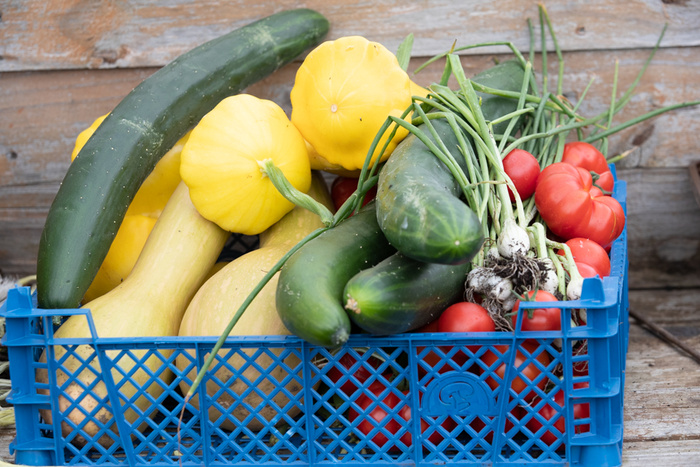
In addition to the charitable exploits, the other purpose of project 63 was to grow some more experimental fruit and vegetables, share the outcomes, and encourage others to grow varieties they maybe would not previously have considered. Some of these experiments have proved to be successful, some moderate, and one or two not to be repeated, all of which have been expressed on this blog section at some time over the last couple of years.
Knowing part of the year was going to be difficult owing to the World Cup Cricket, we took an early decision to cut down on the experiments, and focus on the most productive crops for the charity, and whilst we are only delivering once a week at the moment, this delivery comprises 7-8 full trays of crops, plus donations from other plot holders, which is hugely appreciated.
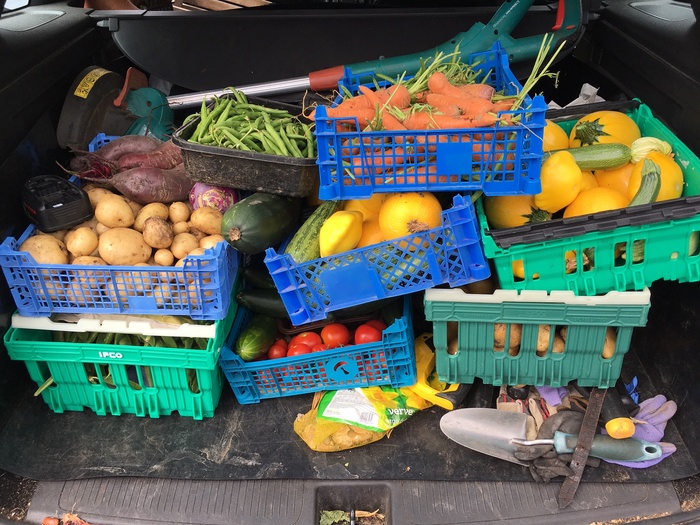
A view of Karen's jalopy with the trays of fruit and vegetables to be delivered to Sanctus
Over wintering onions, garlic, early potatoes and leeks formed the basis of the early period deliveries, and we are now at the point where a glut of courgettes, squashes, potatoes, carrots, tomatoes, runner beans, are being topped up with spring onions, cucumbers, beetroot, Kohl Rabi, French beans, blackberries, apples and raspberries. Over the last couple of weeks we have also delivered several Tromboncino squashes (See later in the article), and these along with the petit pan squashes have proved extremely productive.
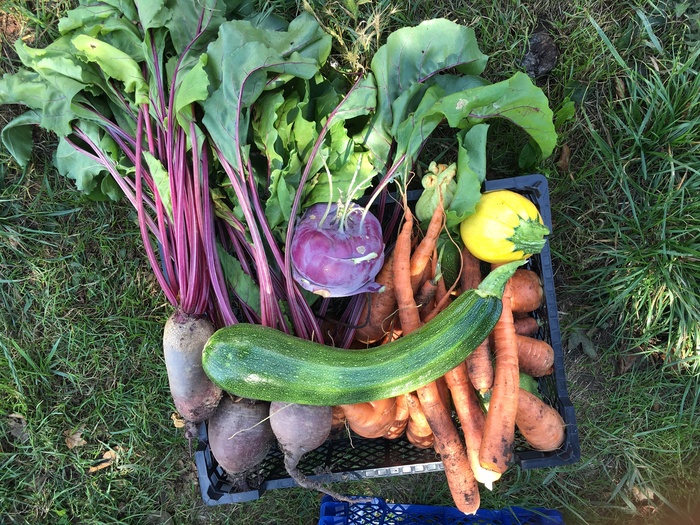
On the experimental front, we re tried Asparagus Peas, which have a beautiful snow flake type growth, red flowers, and the fruits up to about an inch or so long are good. However, they need to be harvested and used pretty immediately, and whilst productive, probably not in the volumes useful enough. If the fruit is not caught early, they become very woody. We are also re trying the Oca or New Zealand Yams, which were partially successful last year, although we viewed we harvested too early. These need to be left in the ground for at least two to three weeks after the first severe frosts. We harvested quite a decent crop last year, offered out to various plot holders to try, and then re planted two dozen further tubers to see if we could improve our outcomes.
One of the failures last year was the attempt to grow Edamame Beans, and we are trying a small batch again this year to see if we can catch the harvest point at the right time, as these seemingly are compact enough to be grown in reasonably tight spaces, or even raised beds.
One of the big plusses early on was the crop of Elephant Garlic, which produced massive sweet bulbs, which we are now going to separate and grow on again over the next winter. We discarded the Sharks Fin Melon, which despite running rampant and producing copious fruits, was not able to be used by the charity, and there are only so many bowls of soup you can consume!!!
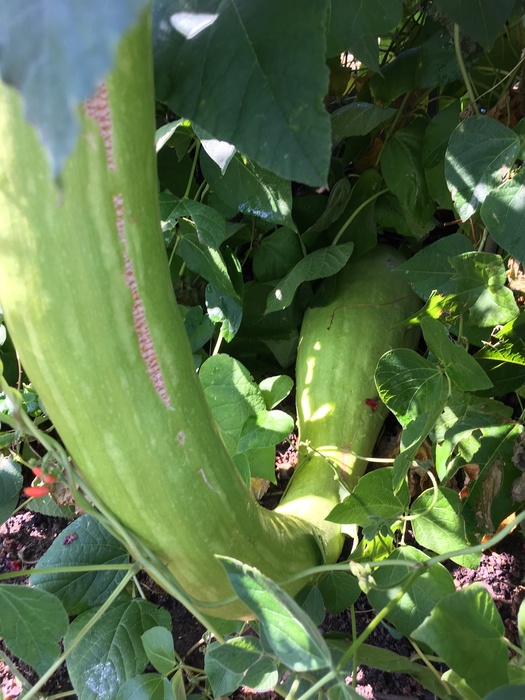
The major plus this year has been the Tromboncino or Tuscan Squash. Inspired to give these a bash following a visit to the Amalfi coast last year where they could be seen hanging over most walls or trellises. We even followed the planting instructions – unlike the famous Peruvian Stuffing Cucumber debacle – built a framework for them on part of the bean trellis, and have watched them vigorously take over and produce a swathe of trombone shaped fruits. We have given several away to fellow plot holders for a try, several to Sanctus and have experimented with various recipes in the kitchen. This particular squash is proving to be hugely versatile; we have stir fried, roasted with onions and rosemary, formed the base ingredient for a simple curry, added as an extension to a ratatouille, and best of all made Tromboncino fritters from a recipe sourced from the Internet of Things.
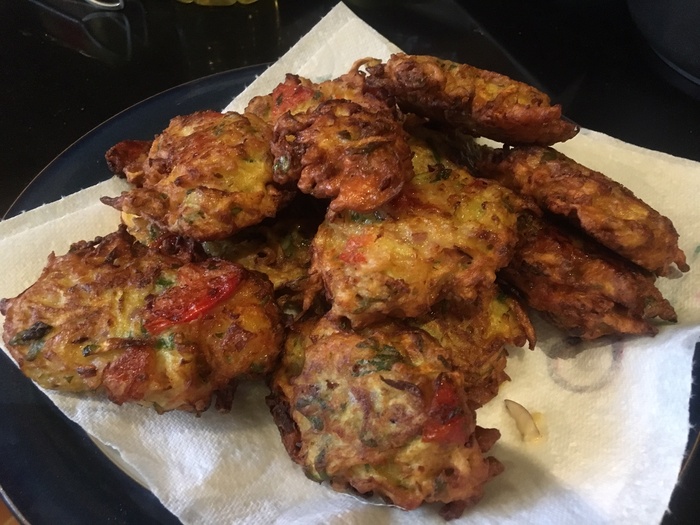
Tromboncino fritters, grated tromboncino, tomato, onion and mint, mixed with egg and flour and fried in shallow oil.
The curry and fritters received a hearty thumbs up from all concerned, and would recommend those interested to give this extra ordinary squash a try.
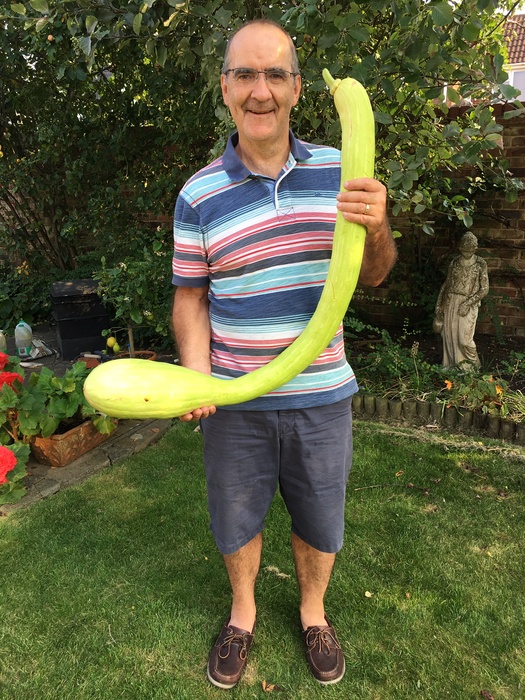
The two other experiments (outside some different chilli varieties), were a variety of outdoor melons (we are growing two plants outside and two in the poly tunnel to see how big a difference), and two varieties of gherkins. However, due to running out of space in the poly tunnel, have grown the latter two in our conservatory. The gherkins, we are just waiting to try out – have pickled them and waiting to pop the jar, and unfortunately the West Indian Gherkins haven’t really produced, the one I really wanted to succeed with.
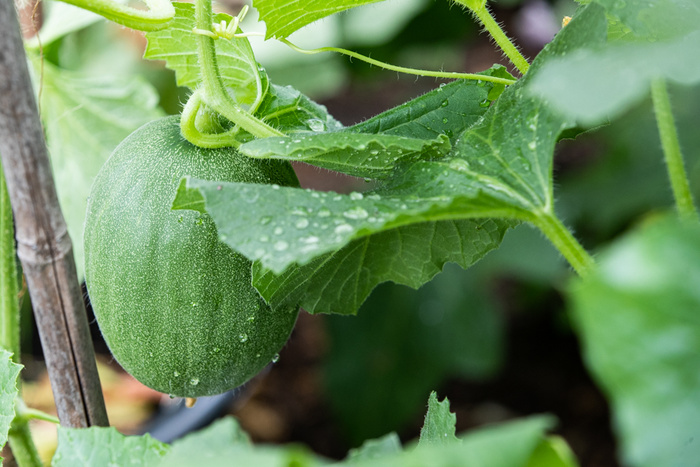
On the Chilli front, we have again given away Piemento de Padron to various plot holders this year, a success from last, and have pickled a batch of teardrop chilli’s (Biquinho) to try later. These are sweet chilli’s, low on the Scoville heat factor and can often be found on pizza’s or pickled. An update to follow, hopefully a little quicker than this article has taken to publish.
Project 63
29th August 2019
In: Project 63

This article, rather lengthy, hopes to make up for the lack of information or posts in relation to progress with Project 63 during 2019. Apart from a request for help whilst one of the principal protagonists spent 6 weeks up and down the country photographing the Cricket World Cup, radio silence has prevailed.
During 2018, we probably went a little overboard with the experimentation, whilst producing a host of crops which were continuously delivered to our charitable outlet, Sanctus. We have stopped delivering to two other charities, as it didn’t seem the produce was being used, and we couldn’t really get any feedback. From time to time we have excess fruit and vegetables and have a further outlet in the form of a charitable soup kitchen run by volunteers, and we occasionally deliver produce to the local sheltered accommodation. In this respect not too much has changed.

In addition to the charitable exploits, the other purpose of project 63 was to grow some more experimental fruit and vegetables, share the outcomes, and encourage others to grow varieties they maybe would not previously have considered. Some of these experiments have proved to be successful, some moderate, and one or two not to be repeated, all of which have been expressed on this blog section at some time over the last couple of years.
Knowing part of the year was going to be difficult owing to the World Cup Cricket, we took an early decision to cut down on the experiments, and focus on the most productive crops for the charity, and whilst we are only delivering once a week at the moment, this delivery comprises 7-8 full trays of crops, plus donations from other plot holders, which is hugely appreciated.

A view of Karen's jalopy with the trays of fruit and vegetables to be delivered to Sanctus
Over wintering onions, garlic, early potatoes and leeks formed the basis of the early period deliveries, and we are now at the point where a glut of courgettes, squashes, potatoes, carrots, tomatoes, runner beans, are being topped up with spring onions, cucumbers, beetroot, Kohl Rabi, French beans, blackberries, apples and raspberries. Over the last couple of weeks we have also delivered several Tromboncino squashes (See later in the article), and these along with the petit pan squashes have proved extremely productive.

On the experimental front, we re tried Asparagus Peas, which have a beautiful snow flake type growth, red flowers, and the fruits up to about an inch or so long are good. However, they need to be harvested and used pretty immediately, and whilst productive, probably not in the volumes useful enough. If the fruit is not caught early, they become very woody. We are also re trying the Oca or New Zealand Yams, which were partially successful last year, although we viewed we harvested too early. These need to be left in the ground for at least two to three weeks after the first severe frosts. We harvested quite a decent crop last year, offered out to various plot holders to try, and then re planted two dozen further tubers to see if we could improve our outcomes.
One of the failures last year was the attempt to grow Edamame Beans, and we are trying a small batch again this year to see if we can catch the harvest point at the right time, as these seemingly are compact enough to be grown in reasonably tight spaces, or even raised beds.
One of the big plusses early on was the crop of Elephant Garlic, which produced massive sweet bulbs, which we are now going to separate and grow on again over the next winter. We discarded the Sharks Fin Melon, which despite running rampant and producing copious fruits, was not able to be used by the charity, and there are only so many bowls of soup you can consume!!!

The major plus this year has been the Tromboncino or Tuscan Squash. Inspired to give these a bash following a visit to the Amalfi coast last year where they could be seen hanging over most walls or trellises. We even followed the planting instructions – unlike the famous Peruvian Stuffing Cucumber debacle – built a framework for them on part of the bean trellis, and have watched them vigorously take over and produce a swathe of trombone shaped fruits. We have given several away to fellow plot holders for a try, several to Sanctus and have experimented with various recipes in the kitchen. This particular squash is proving to be hugely versatile; we have stir fried, roasted with onions and rosemary, formed the base ingredient for a simple curry, added as an extension to a ratatouille, and best of all made Tromboncino fritters from a recipe sourced from the Internet of Things.

Tromboncino fritters, grated tromboncino, tomato, onion and mint, mixed with egg and flour and fried in shallow oil.
The curry and fritters received a hearty thumbs up from all concerned, and would recommend those interested to give this extra ordinary squash a try.

The two other experiments (outside some different chilli varieties), were a variety of outdoor melons (we are growing two plants outside and two in the poly tunnel to see how big a difference), and two varieties of gherkins. However, due to running out of space in the poly tunnel, have grown the latter two in our conservatory. The gherkins, we are just waiting to try out – have pickled them and waiting to pop the jar, and unfortunately the West Indian Gherkins haven’t really produced, the one I really wanted to succeed with.

On the Chilli front, we have again given away Piemento de Padron to various plot holders this year, a success from last, and have pickled a batch of teardrop chilli’s (Biquinho) to try later. These are sweet chilli’s, low on the Scoville heat factor and can often be found on pizza’s or pickled. An update to follow, hopefully a little quicker than this article has taken to publish.
Project 63
Project 63 - Temporary Assistance Required
29th May 2019
One of the co-pilots for Project 63, who is known to take the odd photograph or two, has been accredited for the ICC World Cricket Cup 2019. The first warm up fixtures have been completed, and the tournament for real commences Thursday 30th May and runs for 4-6 weeks.
During this period of time, Ray's ability to be on site tending his 'second love' will be extremely limited as accreditation for the majority of the fixtures has been granted.
We would therefore like to request, should anyone have some spare capacity they may be able to afford, for some temporary assistance on Project 63 across this period of time to keep the plot going, so we may be able to continue to donate produce to our chosen charities.
Anyone who feels they may be able to chip in, please contact Karen Lawrence who can advise exactly what may be required over the coming weeks.
If you are a cricket aficionado you can follow a selection of the action at www.raylawphoto.co.uk, starting with the official opening fixture England v South Africa, 30th May 2019.
Thanks in advance for anyone who may be able to Assist.
29th May 2019
In: Project 63
One of the co-pilots for Project 63, who is known to take the odd photograph or two, has been accredited for the ICC World Cricket Cup 2019. The first warm up fixtures have been completed, and the tournament for real commences Thursday 30th May and runs for 4-6 weeks.
During this period of time, Ray's ability to be on site tending his 'second love' will be extremely limited as accreditation for the majority of the fixtures has been granted.
We would therefore like to request, should anyone have some spare capacity they may be able to afford, for some temporary assistance on Project 63 across this period of time to keep the plot going, so we may be able to continue to donate produce to our chosen charities.
Anyone who feels they may be able to chip in, please contact Karen Lawrence who can advise exactly what may be required over the coming weeks.
If you are a cricket aficionado you can follow a selection of the action at www.raylawphoto.co.uk, starting with the official opening fixture England v South Africa, 30th May 2019.
Thanks in advance for anyone who may be able to Assist.
Experimental Veg - Final Update for 2018
16th December 2018
After the last post we were still waiting for the first frosts and the wait for 2-3 weeks to harvest the New Zealand Yams. The Frost duly arrived in November, and we dug a couple of the plants up to reveal a small, but none the less pleasing result. We have decided to leave the other 8 or so plants in the ground for a further couple of weeks to see if the tubers continued to develop (we believe we may have been a little anxious to see the results).
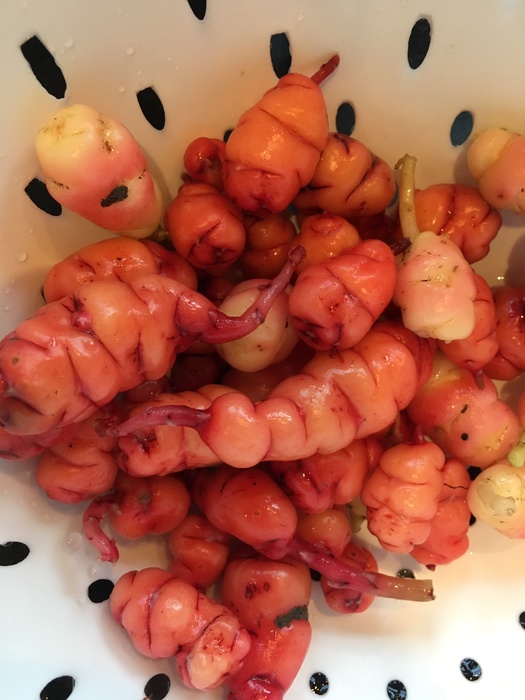
Following the instructions carefully and leaving them on the windowsill for a couple of days, we then roasted our small crop for about 20 minutes in olive oil, dusted with salt and pepper. I can confirm we will definitely be growing more in 2019; the Yams proved very tasty.
Once we have harvested the remaining plants, we'll post a further note and anyone who is interested in trying them or even growing these vegetables please can contact Karen or Ray. The tubers chit in the same fashion as Potatoes, and have proved reasonably straight forward as an experiment for this year.
The other burning issue on hand was the amount of Sharks Fins Melons we managed to produce, and how on earth were we going to eat so much soup. Equally our first attempt at the soup was only really appreciated by the author and son, and consequently, about 20 squashes remain untouched on our conservatory floor.
Our Neighbours on the other hand, knew exactly what to do with these rather large squashes, and taking a couple off our hands promptly produced an excellent 'Poor Man's Shark Fin Melon Soup' which went down and treat in our household. It turns out these vegetables are quite the favourite, and having owned and run an Oriental restaurant for the best part of 25 years, cooking them up was not going to prove an issue for them.
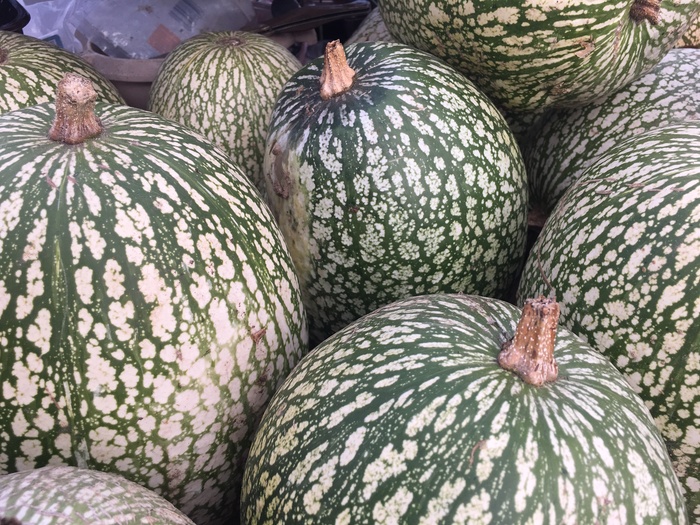
Our neighbours gracefully passed on the cooking information as follows
- make a basic stock or broth using pork ribs (boil the bones with bits of meat on for approximately an hour. Add a piece of ginger and a few peppercorns and coriander seed.
- add a mushroom or vegetable stock cube, or cube of your choice
- Peel the sharks fin melon, scoop out the inner centre and use the outer flesh diced the sharks fin melon. Cook for a further 25-30 minutes until the melon starts to shred or string
- add black pepper and chopped chives just before serving and season with salt to taste.
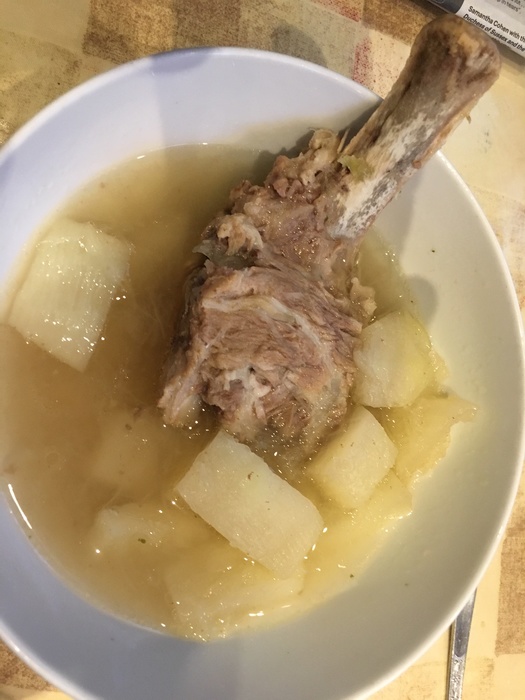
This simple dish proved a hit all round.
If anyone is interested, there is a surfeit of sharks fin melons on hand at project 63, and if you would like to try out, please ask Karen or Tony at the trading hut.
16th December 2018
In: Project 63
After the last post we were still waiting for the first frosts and the wait for 2-3 weeks to harvest the New Zealand Yams. The Frost duly arrived in November, and we dug a couple of the plants up to reveal a small, but none the less pleasing result. We have decided to leave the other 8 or so plants in the ground for a further couple of weeks to see if the tubers continued to develop (we believe we may have been a little anxious to see the results).

Following the instructions carefully and leaving them on the windowsill for a couple of days, we then roasted our small crop for about 20 minutes in olive oil, dusted with salt and pepper. I can confirm we will definitely be growing more in 2019; the Yams proved very tasty.
Once we have harvested the remaining plants, we'll post a further note and anyone who is interested in trying them or even growing these vegetables please can contact Karen or Ray. The tubers chit in the same fashion as Potatoes, and have proved reasonably straight forward as an experiment for this year.
The other burning issue on hand was the amount of Sharks Fins Melons we managed to produce, and how on earth were we going to eat so much soup. Equally our first attempt at the soup was only really appreciated by the author and son, and consequently, about 20 squashes remain untouched on our conservatory floor.
Our Neighbours on the other hand, knew exactly what to do with these rather large squashes, and taking a couple off our hands promptly produced an excellent 'Poor Man's Shark Fin Melon Soup' which went down and treat in our household. It turns out these vegetables are quite the favourite, and having owned and run an Oriental restaurant for the best part of 25 years, cooking them up was not going to prove an issue for them.

Our neighbours gracefully passed on the cooking information as follows
- make a basic stock or broth using pork ribs (boil the bones with bits of meat on for approximately an hour. Add a piece of ginger and a few peppercorns and coriander seed.
- add a mushroom or vegetable stock cube, or cube of your choice
- Peel the sharks fin melon, scoop out the inner centre and use the outer flesh diced the sharks fin melon. Cook for a further 25-30 minutes until the melon starts to shred or string
- add black pepper and chopped chives just before serving and season with salt to taste.

This simple dish proved a hit all round.
If anyone is interested, there is a surfeit of sharks fin melons on hand at project 63, and if you would like to try out, please ask Karen or Tony at the trading hut.
Project 63 Update
27th October 2018
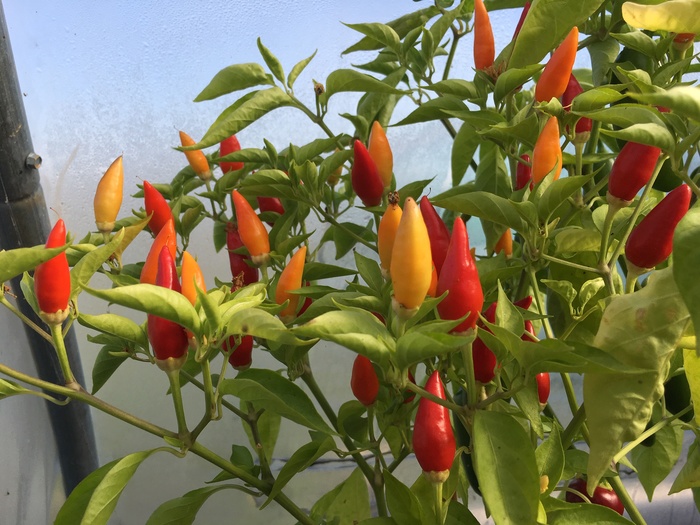
The season is fast closing, and following various posts plotting the progress of the experimental vegetables this year, it is probably time to indicate exactly how we fared with some of the more unusual.
It would be fair to say considerable success was enjoyed with the range of chilli's grown, especially the Piamento de Padron, which are still producing fruits following (thanks to fine weather) quite a lengthy season. All the chilli's have flourished in the polly tunnel, and we are going to retain a couple to grow next season and then experiment with some other varieties. All the chilli's this year were low to medium heat, the hottest Jalapeño's, which are not overly high on the Scoville Index.
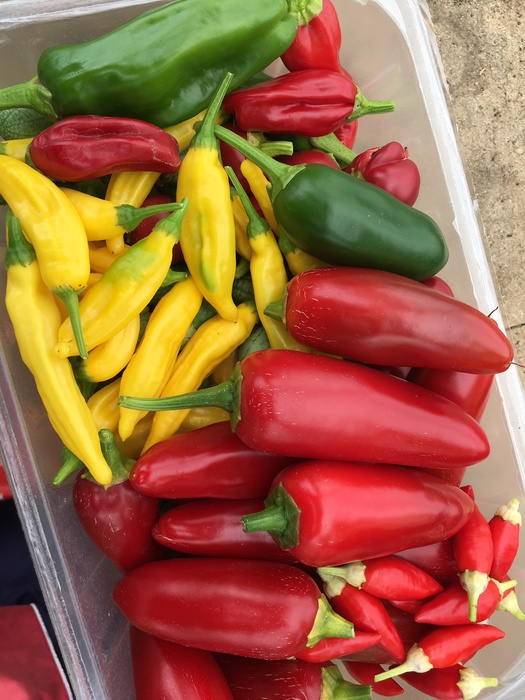
The Asparagus Peas were also pretty successful, except we couldn't harvest them quickly enough. They have also self seeded and we have some further plants which are currently still growing, with flower, and waiting to see if we get any further production from these.
One of the most productive successes was the Shark's Fin Melon (actually a spaghetti squash), which ended up rampaging across the plot despite numerous, quite vigorous cutting back. The issue with the fruits here are the charities don't seem to want them, and they have been overly bountiful. If anyone would like to take one or two off our hands we would be really grateful. The squash will keep for several months, and is used in Asia to produce an equivalent Shark Fin Soup, hence the name, and in Mexico with lots of added sugar to produce sweet mix for pastries or Jam. James Wong recipe can be found easily on line,
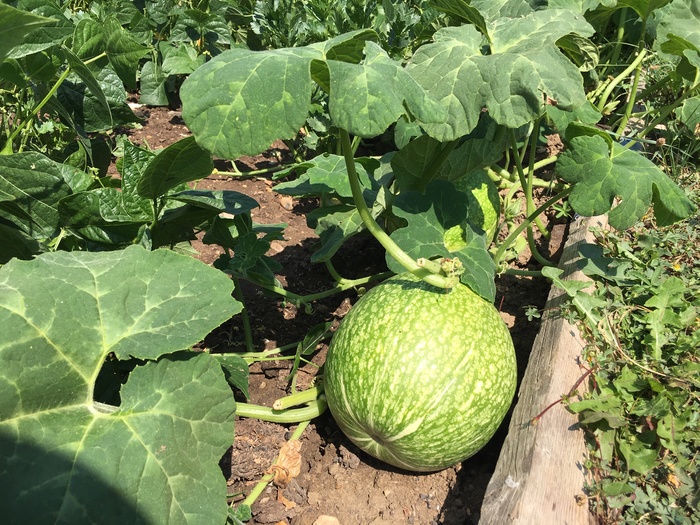
Cucamelons could also be considered quite successful, and we cultivated one group and grew in the polly tunnel, and one group outside. The results were not particularly different, both sets of plants producing a considerable volume of olive sized fruits.
We are going to re try Edamane Beans for next years, as the results were not great, but believe this to be due to our leaving the fruits on the plants too long, rather than the ability to grow them, so watch this space next year to see how we get along.
Finally, we are still looking forward with some anticipation for the first serious frosts to take hold, to enable the tubers to form on our small crop of New Zealand Yams (Oca). We'll post a further update once we have harvested these.
various plot holders have tried our experimental vegetables, and in the main has meant with a positive thumbs up. So if you fancy growing any of these next year, catch up with Karen or Ray. It's proved interesting!
27th October 2018
In: Project 63

The season is fast closing, and following various posts plotting the progress of the experimental vegetables this year, it is probably time to indicate exactly how we fared with some of the more unusual.
It would be fair to say considerable success was enjoyed with the range of chilli's grown, especially the Piamento de Padron, which are still producing fruits following (thanks to fine weather) quite a lengthy season. All the chilli's have flourished in the polly tunnel, and we are going to retain a couple to grow next season and then experiment with some other varieties. All the chilli's this year were low to medium heat, the hottest Jalapeño's, which are not overly high on the Scoville Index.

The Asparagus Peas were also pretty successful, except we couldn't harvest them quickly enough. They have also self seeded and we have some further plants which are currently still growing, with flower, and waiting to see if we get any further production from these.
One of the most productive successes was the Shark's Fin Melon (actually a spaghetti squash), which ended up rampaging across the plot despite numerous, quite vigorous cutting back. The issue with the fruits here are the charities don't seem to want them, and they have been overly bountiful. If anyone would like to take one or two off our hands we would be really grateful. The squash will keep for several months, and is used in Asia to produce an equivalent Shark Fin Soup, hence the name, and in Mexico with lots of added sugar to produce sweet mix for pastries or Jam. James Wong recipe can be found easily on line,

Cucamelons could also be considered quite successful, and we cultivated one group and grew in the polly tunnel, and one group outside. The results were not particularly different, both sets of plants producing a considerable volume of olive sized fruits.
We are going to re try Edamane Beans for next years, as the results were not great, but believe this to be due to our leaving the fruits on the plants too long, rather than the ability to grow them, so watch this space next year to see how we get along.
Finally, we are still looking forward with some anticipation for the first serious frosts to take hold, to enable the tubers to form on our small crop of New Zealand Yams (Oca). We'll post a further update once we have harvested these.
various plot holders have tried our experimental vegetables, and in the main has meant with a positive thumbs up. So if you fancy growing any of these next year, catch up with Karen or Ray. It's proved interesting!
Experimental Produce Update - Project 63
11th July 2018
Earlier posts have made reference to some different crops we have been experimenting with on plot 63. We have already broadcast the success of the Padron Peppers, and various plot holders have now tried these (and hopefully well received).
The New Zealand Yams seem to be in good shape with lots of foliage and have been well watered, and we are just waiting for the point where the leaves turn. At this point the instructions suggest to bury the foliage just under the surface to stimulate a bigger harvest. We'll keep you posted in regards progress.
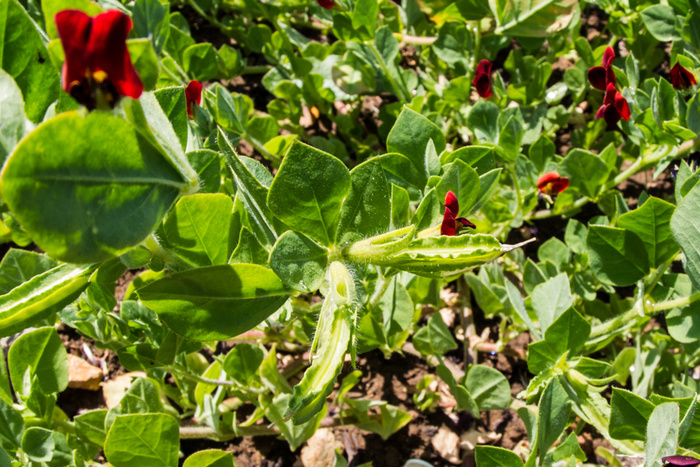
Our Asparagus Peas have gone mad, and the 12 plants which form an attractive ground cover with red flowers, have been producing like mad, to the point where it's been a bit of a struggle to keep up. The secret it seems is to keep picking and the plants themselves then keep producing.
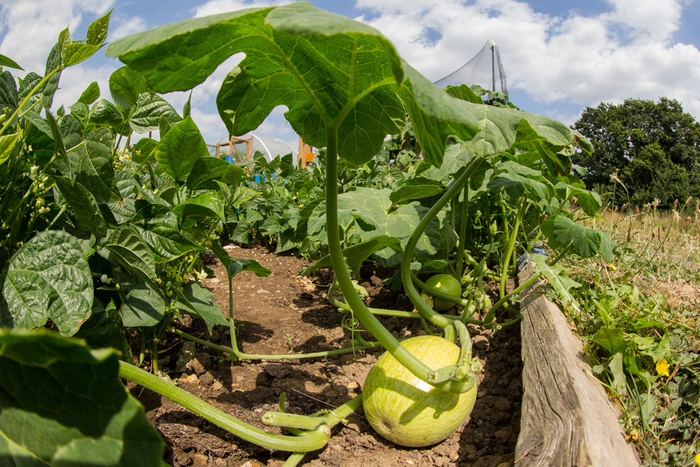
Having been warned about the voracity of the Shark Fin Melon, we are now finding out just how far these plants will spread. They have ow produced quite a few 'melons' which are sizing up well, but have cut back various runners from the plant otherwise we would simply be over run. These fruits grow to the size of rugby balls, and can be used as a soup, or there is a mexican desert or jam which can be produced. (various recipes can be found by googling 'Sharks Fin Melon'.
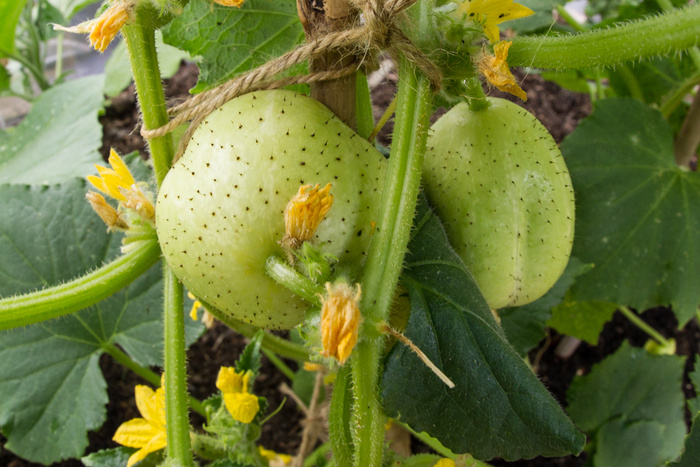
The crystal lemon cucumbers have fared well in the poly tunnel and in fact some have already been donated to Sanctus. Once again these plants seem to be highly productive.
The three other experiments are still coming to fruition. Cucamelons were tried a couple of years ago, and we failed to grow anything meaningful. I think this was more due to another crop which had been grown which rather over ran the poly tunnel and smothered everything else. We are cultivating 3-4 plants in the polytunnel and the same outside as they are suggested to be resistant to the normal array of pests. These grape or olive sized fruits taste similar to cucumber with a tinge of lime.
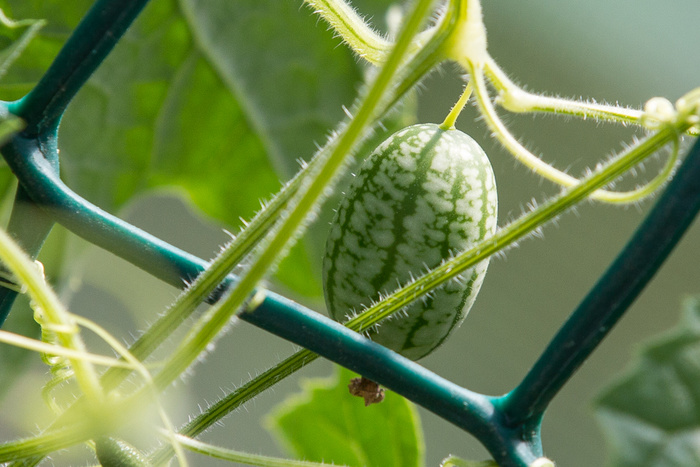
We have planted out 8 Edamane Bean plants which seem to be growing well but too early at the moment to determine how productive and the one disappointment is our experiment with Okra. Whilst one of the plants seems to have taken, it's rather miserable in size, although it now does have a fruit on it. Watch this space for further information.
Well, this is probably about it for now, and a further update will be posted once we have harvested. If anyone is interested in trying or testing any of these 'experimental' vegetables, please get in touch with Karen, and subject to ripening, will be happy to oblige.
We would also be interested in some further feedback on the Padron Peppers. Early viewpoints is a significant thumbs up.
11th July 2018
In: Project 63
Earlier posts have made reference to some different crops we have been experimenting with on plot 63. We have already broadcast the success of the Padron Peppers, and various plot holders have now tried these (and hopefully well received).
The New Zealand Yams seem to be in good shape with lots of foliage and have been well watered, and we are just waiting for the point where the leaves turn. At this point the instructions suggest to bury the foliage just under the surface to stimulate a bigger harvest. We'll keep you posted in regards progress.

Our Asparagus Peas have gone mad, and the 12 plants which form an attractive ground cover with red flowers, have been producing like mad, to the point where it's been a bit of a struggle to keep up. The secret it seems is to keep picking and the plants themselves then keep producing.

Having been warned about the voracity of the Shark Fin Melon, we are now finding out just how far these plants will spread. They have ow produced quite a few 'melons' which are sizing up well, but have cut back various runners from the plant otherwise we would simply be over run. These fruits grow to the size of rugby balls, and can be used as a soup, or there is a mexican desert or jam which can be produced. (various recipes can be found by googling 'Sharks Fin Melon'.

The crystal lemon cucumbers have fared well in the poly tunnel and in fact some have already been donated to Sanctus. Once again these plants seem to be highly productive.
The three other experiments are still coming to fruition. Cucamelons were tried a couple of years ago, and we failed to grow anything meaningful. I think this was more due to another crop which had been grown which rather over ran the poly tunnel and smothered everything else. We are cultivating 3-4 plants in the polytunnel and the same outside as they are suggested to be resistant to the normal array of pests. These grape or olive sized fruits taste similar to cucumber with a tinge of lime.

We have planted out 8 Edamane Bean plants which seem to be growing well but too early at the moment to determine how productive and the one disappointment is our experiment with Okra. Whilst one of the plants seems to have taken, it's rather miserable in size, although it now does have a fruit on it. Watch this space for further information.
Well, this is probably about it for now, and a further update will be posted once we have harvested. If anyone is interested in trying or testing any of these 'experimental' vegetables, please get in touch with Karen, and subject to ripening, will be happy to oblige.
We would also be interested in some further feedback on the Padron Peppers. Early viewpoints is a significant thumbs up.
Project 63 Update
11th July 2018
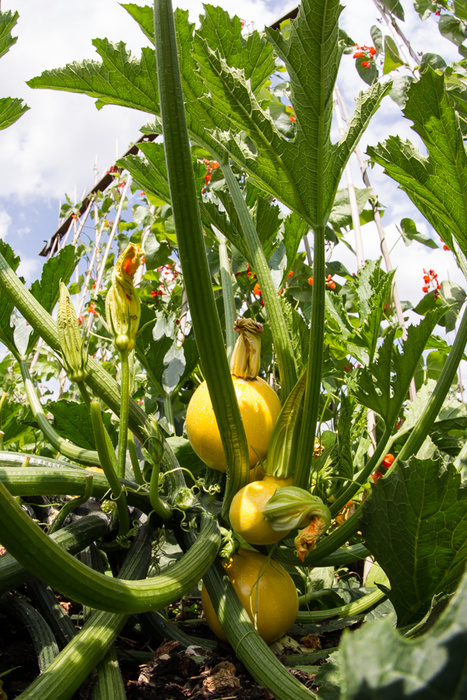
After the huge disappointment of some football match taking place a few miles overseas, thought we should brighten the mood in relation to project 63. Harvesting of various crops is now underway and deliveries to Sanctus organised. A selection of fruit and vegetables, including garlic cloves, courgettes, raspberries, blackcurrants, carrots, french beans, lettuce, beetroot and cucumbers were all picked and delivered today, and were warmly received by the charity. We have also had some donations from other plot holders, and if you believe you have a little surplus, please get in contact with Karen Lawrence. Equally if you view you have some time to spare, we would be very grateful for a little help as watering and harvesting all the produce is no mean feat.
11th July 2018
In: Project 63

After the huge disappointment of some football match taking place a few miles overseas, thought we should brighten the mood in relation to project 63. Harvesting of various crops is now underway and deliveries to Sanctus organised. A selection of fruit and vegetables, including garlic cloves, courgettes, raspberries, blackcurrants, carrots, french beans, lettuce, beetroot and cucumbers were all picked and delivered today, and were warmly received by the charity. We have also had some donations from other plot holders, and if you believe you have a little surplus, please get in contact with Karen Lawrence. Equally if you view you have some time to spare, we would be very grateful for a little help as watering and harvesting all the produce is no mean feat.
Project 63 - Help Required
01st July 2018
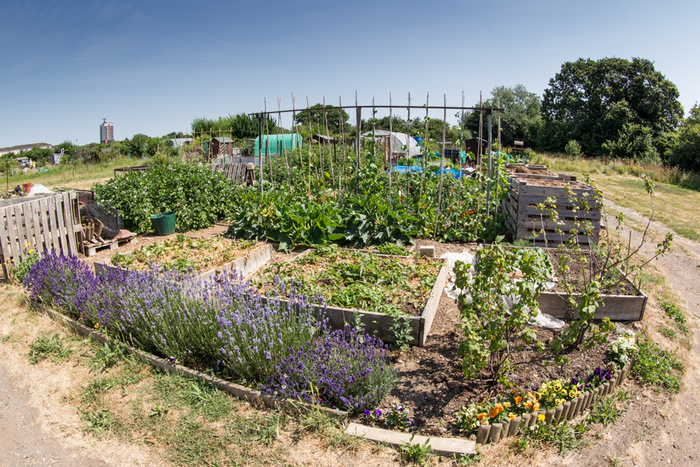
It's now the time of year where project 63 is in full swing, with vegetables and fruit being picked for out chosen charities. We have also had donations already from other plot holders which are gratefully received.
However,it would be really appreciated if any plot holders may be able to afford half an hour or so of their time over the coming weeks in terms of some of the picking and watering to ensure we can keep the deliveries up. We are focusing on Sanctus at the moment, as they are providing meals from the donations and other sources.
If you are able to help out, or would be willing to give up a little bit of time during the week, please contact Karen Lawrence. All assistance would be hugely appreciated.
Thank you in advance
01st July 2018
In: Project 63

It's now the time of year where project 63 is in full swing, with vegetables and fruit being picked for out chosen charities. We have also had donations already from other plot holders which are gratefully received.
However,it would be really appreciated if any plot holders may be able to afford half an hour or so of their time over the coming weeks in terms of some of the picking and watering to ensure we can keep the deliveries up. We are focusing on Sanctus at the moment, as they are providing meals from the donations and other sources.
If you are able to help out, or would be willing to give up a little bit of time during the week, please contact Karen Lawrence. All assistance would be hugely appreciated.
Thank you in advance
Spanish Tapas at Melbourne Park
25th June 2018
Anyone who has travelled to Spain, or even had tapas at a Spanish bar or restaurant is likely to be au fait with pimentos de Padrón, or more commonly to you and I, Padron Peppers.
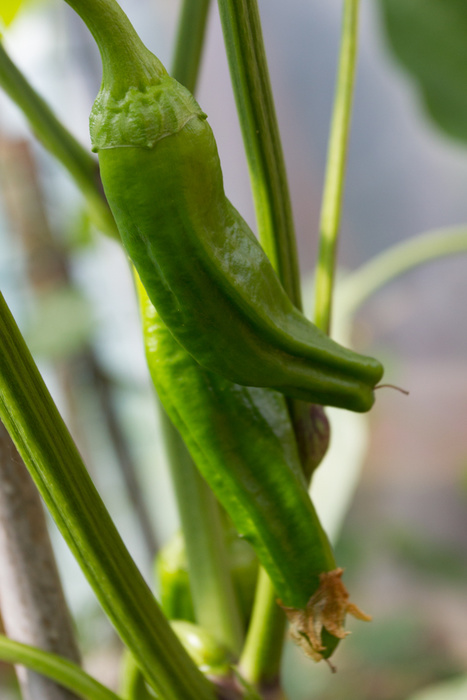
They are a variety of peppers which originate in Galicia, Spain and grow to about 2 inches, 5 cms long, green in colour but if left to mature beyond this size can turn red.
The peppers are unusual in the fact they are generally mild, but a small proportion, 1 in 10 are particularly hot, making your starter a culinary roulette.
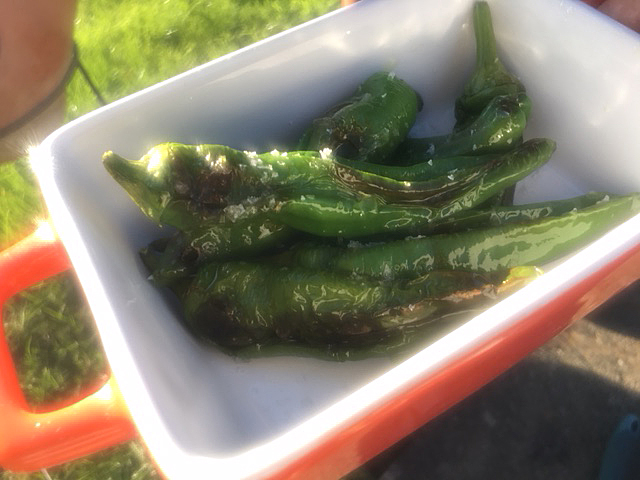
The peppers are customarily fried in olive oil, scorched and sprinkled with course salt and served as tapas.
They have proved relatively straight forward to grow, propagating at 20 degrees and then re potting the plants twice before placing in more significant pots in the poly tunnel.
Seeds are available from various sources, and from an initial 6 seeds sewn we have 5 plants producing these tasty green morsels.
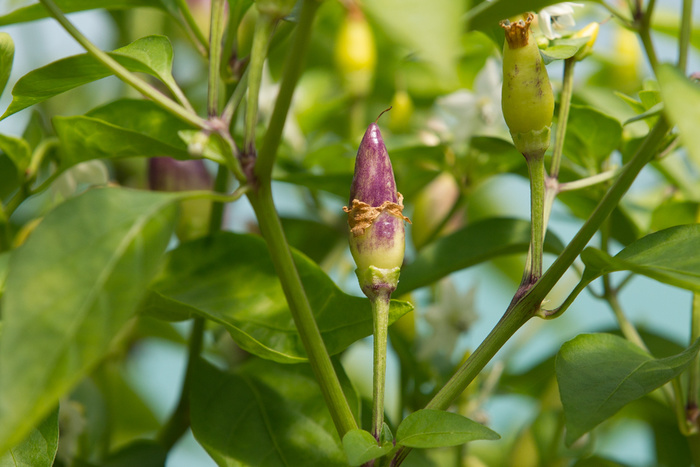
These are not the only different chilli varieties we are growing this year, and are also trying Aji lemon chilli's (hot), large red cherry - image below -(mild), Twilight (hot,- image above), together with Jalapeno's which we were successful with last year.
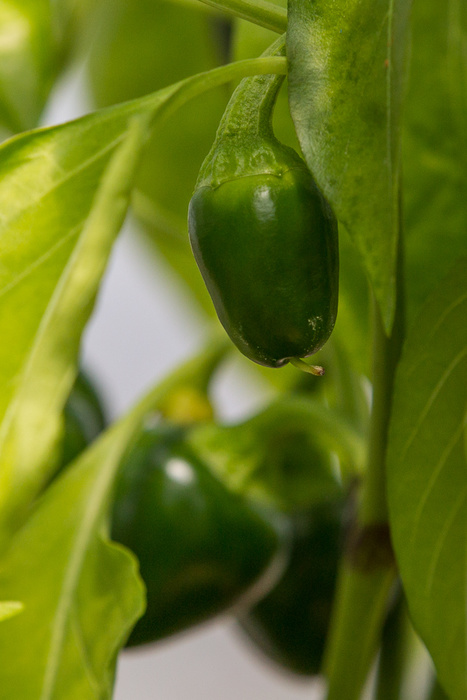
If anyone is interested to try these peppers (subject to availability) please contact Ray or Karen for further information. Part of the objectives for Project 63 was not only to provide local charity with produce, but also to experiment with items which may not usually be grown or considered by plotholders, and this easy to grow, tasty pepper we believe falls into this bracket. We hope we can encourage fellow plot holders to grow them. Punnets of Padron Peppers can also be purchased from certain supermarket chains very reasonably too.
25th June 2018
In: Project 63
Anyone who has travelled to Spain, or even had tapas at a Spanish bar or restaurant is likely to be au fait with pimentos de Padrón, or more commonly to you and I, Padron Peppers.

They are a variety of peppers which originate in Galicia, Spain and grow to about 2 inches, 5 cms long, green in colour but if left to mature beyond this size can turn red.
The peppers are unusual in the fact they are generally mild, but a small proportion, 1 in 10 are particularly hot, making your starter a culinary roulette.

The peppers are customarily fried in olive oil, scorched and sprinkled with course salt and served as tapas.
They have proved relatively straight forward to grow, propagating at 20 degrees and then re potting the plants twice before placing in more significant pots in the poly tunnel.
Seeds are available from various sources, and from an initial 6 seeds sewn we have 5 plants producing these tasty green morsels.

These are not the only different chilli varieties we are growing this year, and are also trying Aji lemon chilli's (hot), large red cherry - image below -(mild), Twilight (hot,- image above), together with Jalapeno's which we were successful with last year.

If anyone is interested to try these peppers (subject to availability) please contact Ray or Karen for further information. Part of the objectives for Project 63 was not only to provide local charity with produce, but also to experiment with items which may not usually be grown or considered by plotholders, and this easy to grow, tasty pepper we believe falls into this bracket. We hope we can encourage fellow plot holders to grow them. Punnets of Padron Peppers can also be purchased from certain supermarket chains very reasonably too.
From Windowsill to Ground
21st May 2018
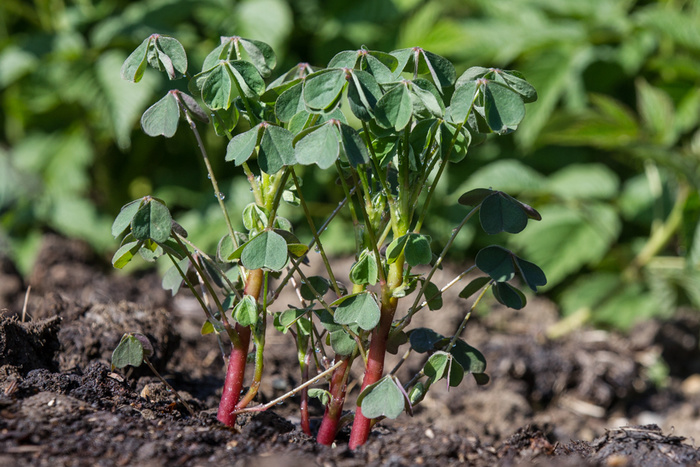
The last post indicated a few different varieties of vegetables we are experimenting this year. A few of these have now successfully transitioned from the windowsill or conservatory at home and now find themselves planted on the allotment, where we are hoping for great things. We intend to follow the progress through this growing season and report back on whether we have been successful or not.
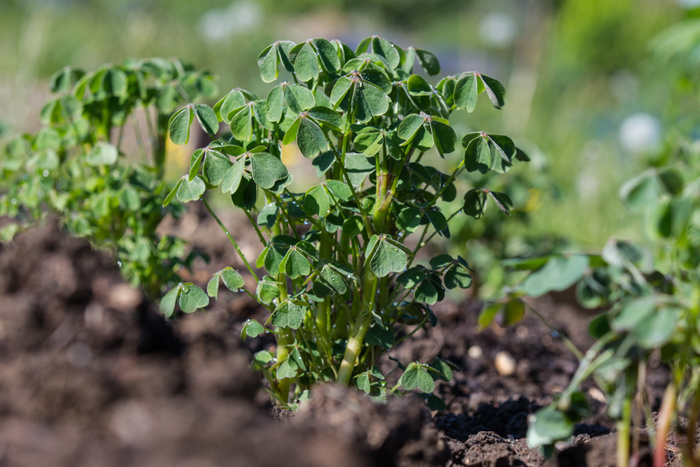
The New Zealand Yams have spent time chitting quietly at home before planting up in small pots, and now all the threat of frost has passed (famous last words) planted. We have started reasonably small scale with this vegetable with just 10 tubers.
Our Asparagus Pea plants have also been planted out, and these are supposed to provide a good ground cover, forming a 20 x 20 cm plant radiating from a central point, a little like a snowflake. Once again it will be interesting to see how this crop develops and we have planted 12 in a sunny spot on the plot.
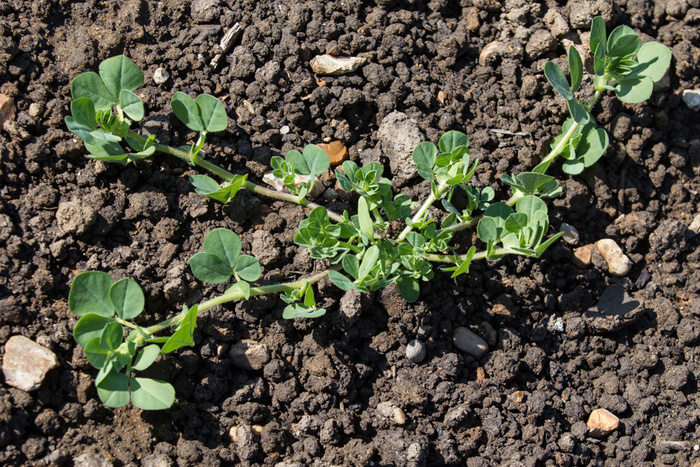
The poly tunnel now hosts various varieties of peppers and chilli's, plus a crystal lemon cucumber plant, which is supposed to produce round yellow fruit as opposed the traditional green baton we are used to. It will be interesting to see how productive this is as the season progresses.
check in frequently to catch up on the latest posts to see how these specimens are getting along, together with information about some of the other vegetables we are trying. For further information about the New Zealand Yams and Asparagus Peas please visit James Wong Homegrown Revolution.
21st May 2018
In: Project 63

The last post indicated a few different varieties of vegetables we are experimenting this year. A few of these have now successfully transitioned from the windowsill or conservatory at home and now find themselves planted on the allotment, where we are hoping for great things. We intend to follow the progress through this growing season and report back on whether we have been successful or not.

The New Zealand Yams have spent time chitting quietly at home before planting up in small pots, and now all the threat of frost has passed (famous last words) planted. We have started reasonably small scale with this vegetable with just 10 tubers.
Our Asparagus Pea plants have also been planted out, and these are supposed to provide a good ground cover, forming a 20 x 20 cm plant radiating from a central point, a little like a snowflake. Once again it will be interesting to see how this crop develops and we have planted 12 in a sunny spot on the plot.

The poly tunnel now hosts various varieties of peppers and chilli's, plus a crystal lemon cucumber plant, which is supposed to produce round yellow fruit as opposed the traditional green baton we are used to. It will be interesting to see how productive this is as the season progresses.
check in frequently to catch up on the latest posts to see how these specimens are getting along, together with information about some of the other vegetables we are trying. For further information about the New Zealand Yams and Asparagus Peas please visit James Wong Homegrown Revolution.
Not so Experimental?
15th May 2018
Hopefully you may have been following the exploits of project 63 which is now in its third year. Following some successful alternatives to your everyday vegetables grown last year, and some fledgling disasters (Peruvian Stuffing Cucumbers) we are again looking to grow some different crops on the site.
However, I am not too sure many of these could be considered experimental, some of which have been given ample coverage in James Wong's book, Homegrown revolution, and one being grown by a plot holder last year who kindly gave me some seeds to try on plot 63.
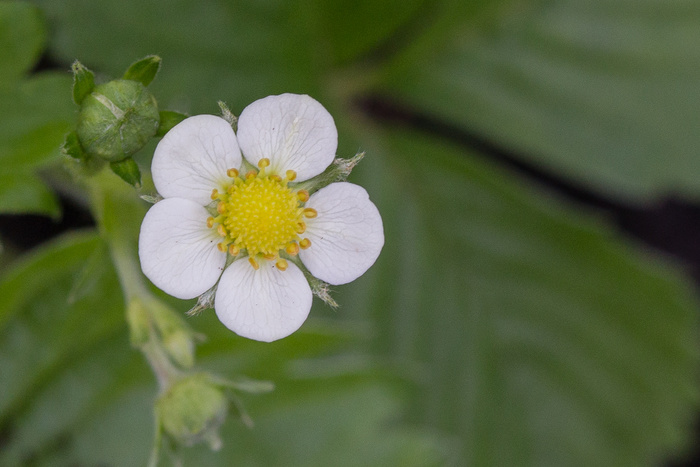
So, what are the plans. We have already planted a few Alpine Strawberries to see how they fare (and they are looking in good shape) and hardening off in and out of the family greenhouse (also used at other times as a conservatory) are Asparagus Peas, New Zealand Yams (OCA), various varieties of Chillis together with a couple of Padron Pepper plants, Cucamelons and Sharks Fin Melon (grown by Annie and Lloyd).
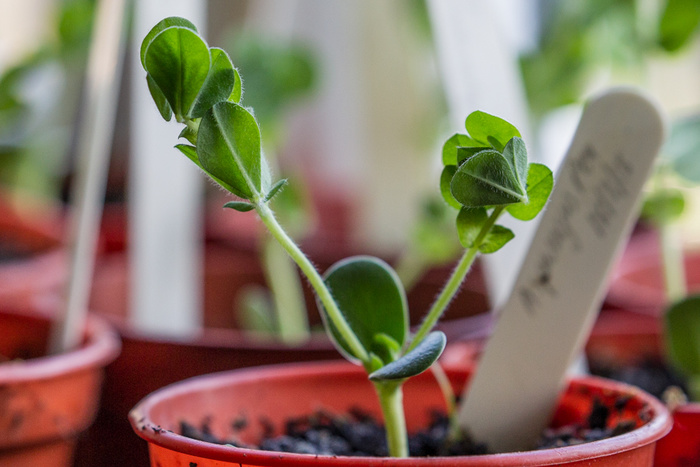
We haven't been very successful in getting some West Indian Gherkins to germinate, and we are also planning to have a bash at growing Edamane Beans (Soy).
The New Zealand Yams have produced a rush of green leaves which are also edible, and as soon as we view all hint of frost has passed will be planting up and hopefully enjoying the fruits of production later in the year. The Yams chit in similar fashion to potatoes, and potted up in compost pending planting out. They stay in the ground until the winter frosts which stimulates the tubers, and can be harvested two weeks after.
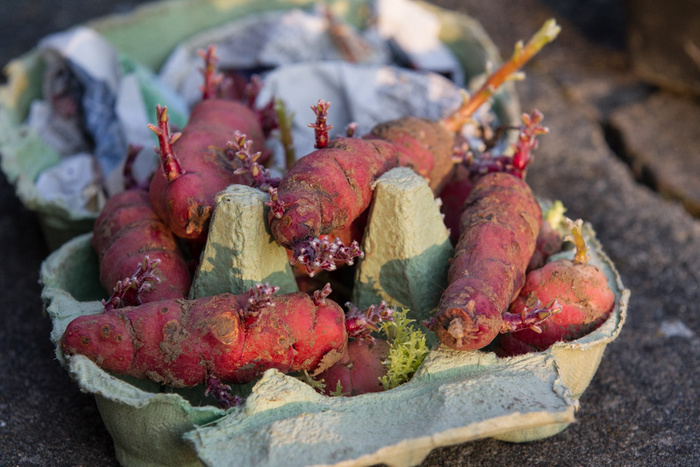
The Sharks Fin Melons are suggested to be prolific growers needing rich soil and very little in terms of looking after, producing as many as 5 large rugby ball fruits by Autumn, and Wong suggests the leaves can also be eaten.
The Asparagus Pea plant has trailing branches which radiates from a central point, with nitrogen fixing roots. The peas require picking young to promote further cropping and to prevent stringiness.
Please check in for further updates to see how these varieties have developed and grown and some information on Cucamelons, Edamane beans and the progress of the Padron Peppers which I am particularly keen to get to harvest.
15th May 2018
In: Project 63
Hopefully you may have been following the exploits of project 63 which is now in its third year. Following some successful alternatives to your everyday vegetables grown last year, and some fledgling disasters (Peruvian Stuffing Cucumbers) we are again looking to grow some different crops on the site.
However, I am not too sure many of these could be considered experimental, some of which have been given ample coverage in James Wong's book, Homegrown revolution, and one being grown by a plot holder last year who kindly gave me some seeds to try on plot 63.

So, what are the plans. We have already planted a few Alpine Strawberries to see how they fare (and they are looking in good shape) and hardening off in and out of the family greenhouse (also used at other times as a conservatory) are Asparagus Peas, New Zealand Yams (OCA), various varieties of Chillis together with a couple of Padron Pepper plants, Cucamelons and Sharks Fin Melon (grown by Annie and Lloyd).

We haven't been very successful in getting some West Indian Gherkins to germinate, and we are also planning to have a bash at growing Edamane Beans (Soy).
The New Zealand Yams have produced a rush of green leaves which are also edible, and as soon as we view all hint of frost has passed will be planting up and hopefully enjoying the fruits of production later in the year. The Yams chit in similar fashion to potatoes, and potted up in compost pending planting out. They stay in the ground until the winter frosts which stimulates the tubers, and can be harvested two weeks after.

The Sharks Fin Melons are suggested to be prolific growers needing rich soil and very little in terms of looking after, producing as many as 5 large rugby ball fruits by Autumn, and Wong suggests the leaves can also be eaten.
The Asparagus Pea plant has trailing branches which radiates from a central point, with nitrogen fixing roots. The peas require picking young to promote further cropping and to prevent stringiness.
Please check in for further updates to see how these varieties have developed and grown and some information on Cucamelons, Edamane beans and the progress of the Padron Peppers which I am particularly keen to get to harvest.
Spring is Here?
26th April 2018
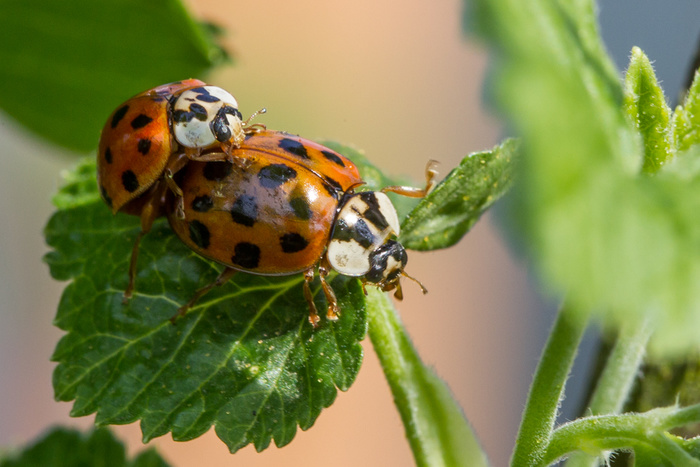
After a really damp April, last weekend provided beautiful weather bringing the notion that Spring had Sprung. There are now a list of tasks for the plot, not the least the task of continual weeding as the pesky other growths develop alongside the items we really want to grow.
Potatoes have been planted (this is the third year) on the opposite side of the plot from the last two years to ensure we rotate. The broad beans and garlic which have overwintered are looking in reasonable shape, and three rows of onions sown just off the runner bean cage.
Half rows of Kohl Rabi, beetroot, and celtuce, to be followed with further half rows over the coming weeks (succession growing), together with two full rows of parsnips form the starting point for the growing season.
The additional raised bed is to be used for various varieties of carrots, along with the furthest (Closest to the IBC). The mid bed has had the first rows of rocket, Pak Choi, and Raddicio placed into 1-2 cm deep drills.
The Poly tunnel has had various varieties of Peppers translated from the household nursery (the conservatory), which despite the migration of a significant number of plants, still has little room to enjoy the longer daylight hours.
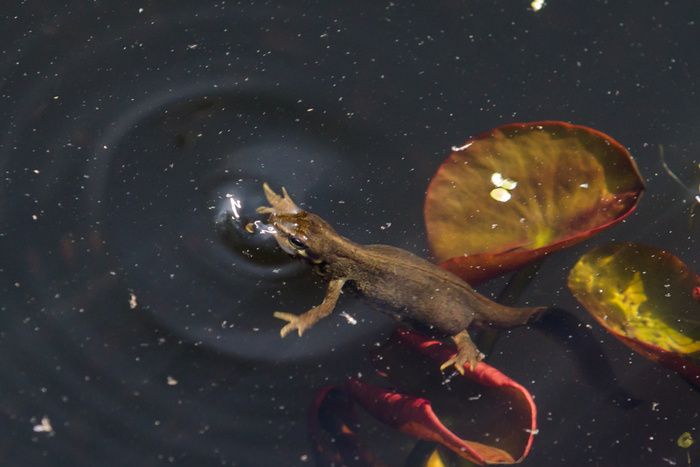
One of the best things about the weekend came as a bit of a surprise - we found two pairs of smooth newts had rather taken to the wildlife feature. We consider this to be a really good healthy sign, with the earlier frog spawn now converted to hoardes of tadpoles, am really hoping a new 'herd' of friendly predators will stick around to help keep the native pests (slugs and snails) under control.
As with the first year, we plan to grow some 'different' types of fruit and vegetables, and have planted out 4 alpine strawberry plants, and a curry leaf plant for starters to see how they cope and what we can produce, and have some further, hopefully interesting possibilities we are going to test this season. Watch this blog for further updates.
Finally, as a bit of a photographer, one of the best things about the plot is the diversity of mini wildlife and the detail in some of the plant structures which become visible. Over the years many images have appeared on the site of all sorts of flies, butterflies, caterpillars, slugs, bees and wasps. Having often wondered about a very specific creature that hovered over the plants with a significant proboscis, I managed to catch said specimen which turns out to be a Bee Fly, which despite it's appearance is harmless.
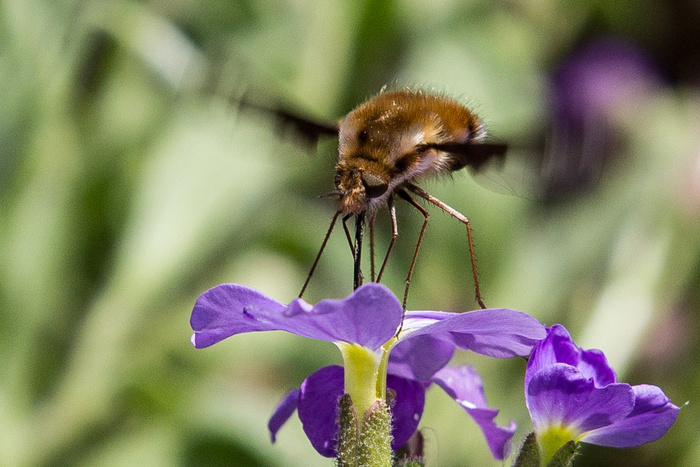
I hope the update has been interesting and please keep coming back to see the progress of our 'interesting possibilities' we are planning to grow this season.
26th April 2018
In: Project 63

After a really damp April, last weekend provided beautiful weather bringing the notion that Spring had Sprung. There are now a list of tasks for the plot, not the least the task of continual weeding as the pesky other growths develop alongside the items we really want to grow.
Potatoes have been planted (this is the third year) on the opposite side of the plot from the last two years to ensure we rotate. The broad beans and garlic which have overwintered are looking in reasonable shape, and three rows of onions sown just off the runner bean cage.
Half rows of Kohl Rabi, beetroot, and celtuce, to be followed with further half rows over the coming weeks (succession growing), together with two full rows of parsnips form the starting point for the growing season.
The additional raised bed is to be used for various varieties of carrots, along with the furthest (Closest to the IBC). The mid bed has had the first rows of rocket, Pak Choi, and Raddicio placed into 1-2 cm deep drills.
The Poly tunnel has had various varieties of Peppers translated from the household nursery (the conservatory), which despite the migration of a significant number of plants, still has little room to enjoy the longer daylight hours.

One of the best things about the weekend came as a bit of a surprise - we found two pairs of smooth newts had rather taken to the wildlife feature. We consider this to be a really good healthy sign, with the earlier frog spawn now converted to hoardes of tadpoles, am really hoping a new 'herd' of friendly predators will stick around to help keep the native pests (slugs and snails) under control.
As with the first year, we plan to grow some 'different' types of fruit and vegetables, and have planted out 4 alpine strawberry plants, and a curry leaf plant for starters to see how they cope and what we can produce, and have some further, hopefully interesting possibilities we are going to test this season. Watch this blog for further updates.
Finally, as a bit of a photographer, one of the best things about the plot is the diversity of mini wildlife and the detail in some of the plant structures which become visible. Over the years many images have appeared on the site of all sorts of flies, butterflies, caterpillars, slugs, bees and wasps. Having often wondered about a very specific creature that hovered over the plants with a significant proboscis, I managed to catch said specimen which turns out to be a Bee Fly, which despite it's appearance is harmless.

I hope the update has been interesting and please keep coming back to see the progress of our 'interesting possibilities' we are planning to grow this season.
Project 63 (year 3)
31st March 2018
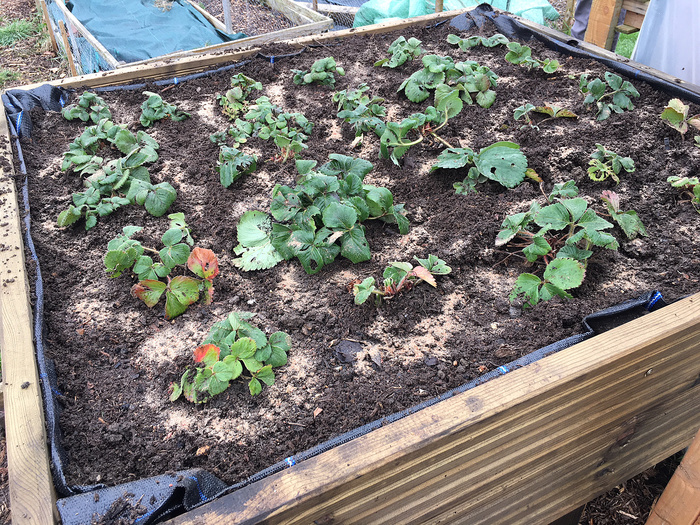
It has been some time from the last post, and the anniversary of the project would seem to be as good as any time to provide an update. Two years ago, we embarked on Project 63, on what was a much brighter and if I recall warmer easter weekend. This easter, marking the start of the third year, the weather has been altogether miserable, and the hopes of early planting scuppered with the saturated soil. Despite this various activities have continued.
The last deliveries to one of our chosen charities were made in late January with the remaining parsnips, carrots, and a few small beetroots delivered to Sanctus.
From this period, my trusty (and still friendly) neighbour helped construct an extension to the shed roof to catch run off water into an IBC which we have laid our hands on. We coated the exterior of the IBC with a black protective layer to prevent algae and greening of the water due to direct sunlight, and mounted on an additional pallet to provide easy access for watering cans.
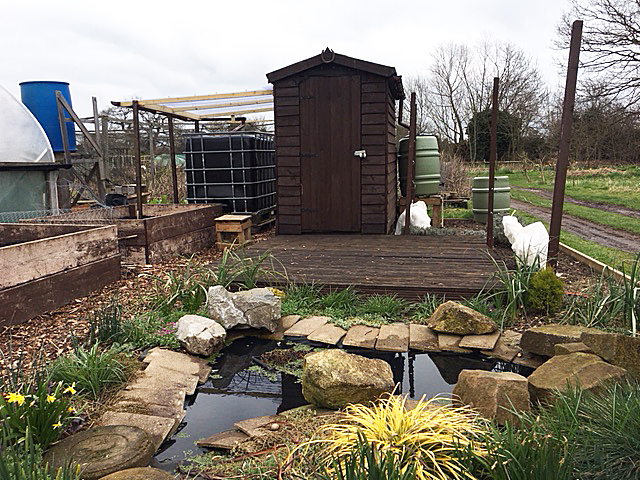
The compost bin has been cleared out, and sieved, with the content scattered and forming part of a new raised bed which has been constructed. Two additional beds have been built to house strawberry plants, some of which have been removed from the front of the plot to make way for other vegetables planned during the year.
Garlic and Broad beans have been planted over the winter period, and these seem to be in good shape towards the poly tunnel and we have modified an old water butt into a container for growing carrots and other vegetables.
The manure deliveries took place over the winter, and this has been spread over the plot and in the poly tunnel to enrich the soil, save in the area where we intend to grow root vegetables.
Our house has been converted into an extra ordinarily large greenhouse as usual, with all manner of pots, plants and seedlings covering every last window sill available, with further plants in the conservatory. Everything from Peppers, chillis, tomato, aubergines are being coerced into growth, with the spare room accommodating the potato chitting process. Once again this year, we are going to experiment with some 'alternative' varieties of vegetables, and watch this space for further news to see how we get along.
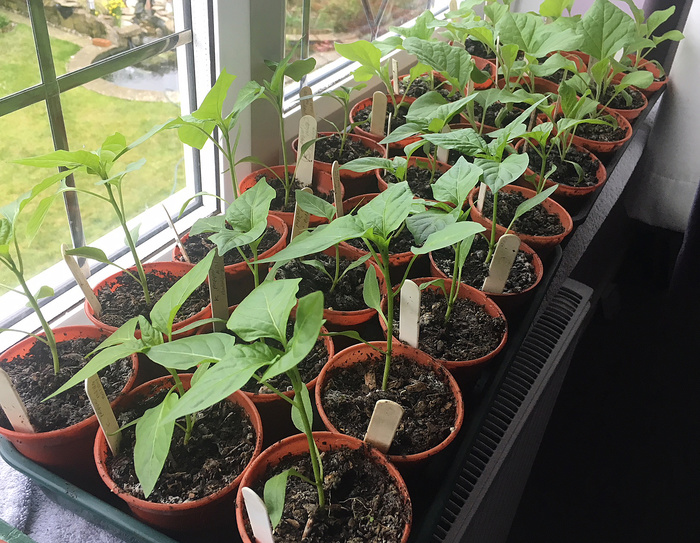
Just as a reminder, project 63 is growing fruit and vegetables and providing the majority to the Association's chosen charities. During the year if you have any excess fruit and vegetables you would like to donate, please do not hesitate and contact Karen or Ray.
31st March 2018
In: Project 63

It has been some time from the last post, and the anniversary of the project would seem to be as good as any time to provide an update. Two years ago, we embarked on Project 63, on what was a much brighter and if I recall warmer easter weekend. This easter, marking the start of the third year, the weather has been altogether miserable, and the hopes of early planting scuppered with the saturated soil. Despite this various activities have continued.
The last deliveries to one of our chosen charities were made in late January with the remaining parsnips, carrots, and a few small beetroots delivered to Sanctus.
From this period, my trusty (and still friendly) neighbour helped construct an extension to the shed roof to catch run off water into an IBC which we have laid our hands on. We coated the exterior of the IBC with a black protective layer to prevent algae and greening of the water due to direct sunlight, and mounted on an additional pallet to provide easy access for watering cans.

The compost bin has been cleared out, and sieved, with the content scattered and forming part of a new raised bed which has been constructed. Two additional beds have been built to house strawberry plants, some of which have been removed from the front of the plot to make way for other vegetables planned during the year.
Garlic and Broad beans have been planted over the winter period, and these seem to be in good shape towards the poly tunnel and we have modified an old water butt into a container for growing carrots and other vegetables.
The manure deliveries took place over the winter, and this has been spread over the plot and in the poly tunnel to enrich the soil, save in the area where we intend to grow root vegetables.
Our house has been converted into an extra ordinarily large greenhouse as usual, with all manner of pots, plants and seedlings covering every last window sill available, with further plants in the conservatory. Everything from Peppers, chillis, tomato, aubergines are being coerced into growth, with the spare room accommodating the potato chitting process. Once again this year, we are going to experiment with some 'alternative' varieties of vegetables, and watch this space for further news to see how we get along.

Just as a reminder, project 63 is growing fruit and vegetables and providing the majority to the Association's chosen charities. During the year if you have any excess fruit and vegetables you would like to donate, please do not hesitate and contact Karen or Ray.
King Size Veg
06th October 2017
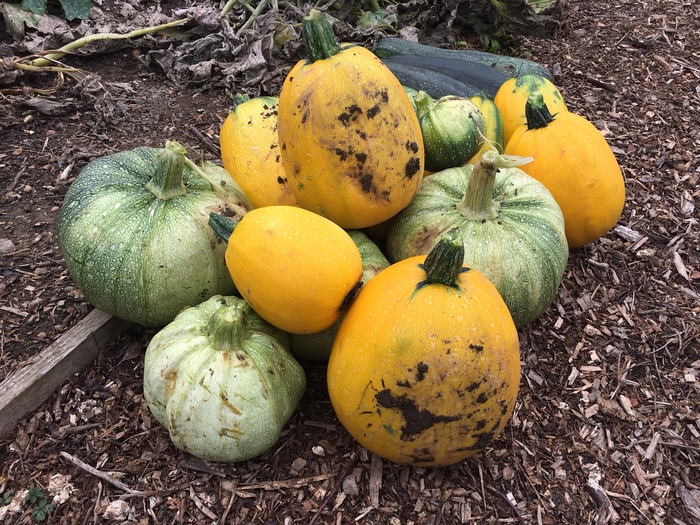
Regrettably, looking after an allotment is a real commitment and when it comes to vacations, despite the best efforts of all your colleagues, somethings get missed. Project 63 was no exception in September, and despite continuing deliveries of vegetables to our chosen charities, several of our courgettes were found hiding under the foliage on our return. Now the suggestion is, when your chosen veggie passes an optimum size it loses its flavour and seem to be jettisoned. I was determined to prove our king size vegetables still had plenty to offer and cooked up one of our medicine sized courgettes to prove the point. If you are interested, for ordinary sized veg too, you will need:
Olive Oil
smokey bacon
onions, carrots, peppers, celery and garlic, all grown on the allotment of course,
salt and pepper.
two chicken stock cubes
6 ounces rice ( for three people)
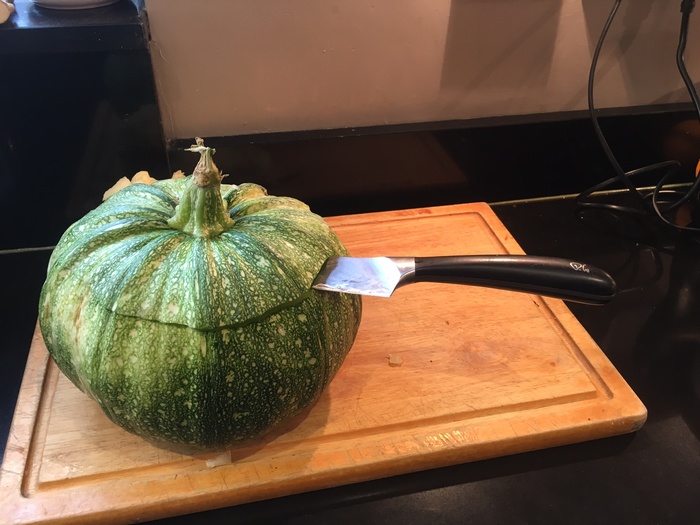
First and foremost decapitate the courgette (Image above) and then carefully relieve it of all the seeds and 'mushy type' middle area. Then scoop out all of the flesh so you are left with a hollowed out courgette.
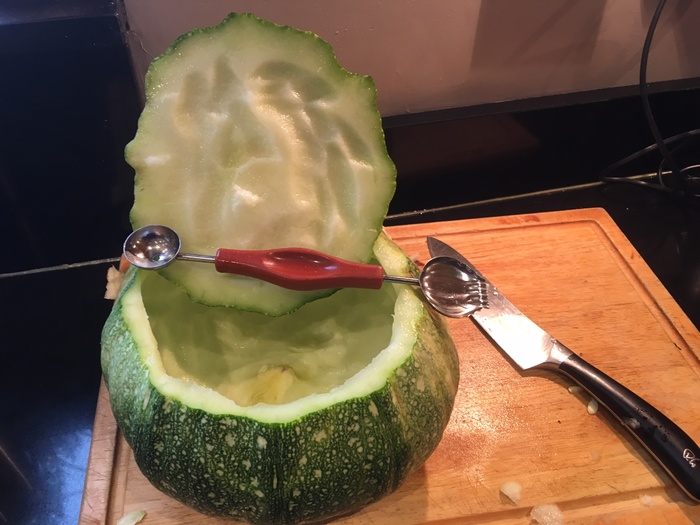
Roughly chop all the vegetables and bacon. in a hot saucepan (quite large in this case) heat a tablespoon or two of olive oil and saute the onion until it is soft. Then add the roughly cut small pieces of bacon) and once cooked add carrots (very finely chopped), celery and peppers together with all the excavated courgette and cook until the carrots are soft. You will have quite a moist pot of food due to the water in the courgette at this point which is fine. Once this is all dealt with and suitably cooked add the bashed and finely chopped garlic and leave lightly on the ring for approx 3-4 minutes and stir in the two chicken stock cubes until they are completely dissolved, adding seasoning to taste.
whilst this is all taking place, boil up 6 ounces rice (or appropriate quantity for the mouths being tempted. Wash through hot water to remove any starch, and then add to your above mix and stir in, and again cook through for a short period.
Place the hollowed out courgette and lid in boiling water for about 3-4 minutes or slightly longer, then drain and place on top of baking foil, criss crossed in the bottom of a baking tray and then add all of the mix, wrap up tightly with the foil, and put in the oven approx 160 degrees for half an hour or slightly longer.
When ready, remove from the oven, and dish up. The longer the initial simmering process of the empty courgette, or the stay in the oven the softer the outer shell becomes, and it is truly just like a soft marrow or courgette at this point and very tasty. Serve with your chosen meat, in our case we coated and seared medallions of pork with a salt and pepper mix, cooked until just loosing its pink tint, leaving a moist piece of meat to accompany our king sized stuffed courgette. (in the end there was sufficient courgette for two lunches the day after!!!)
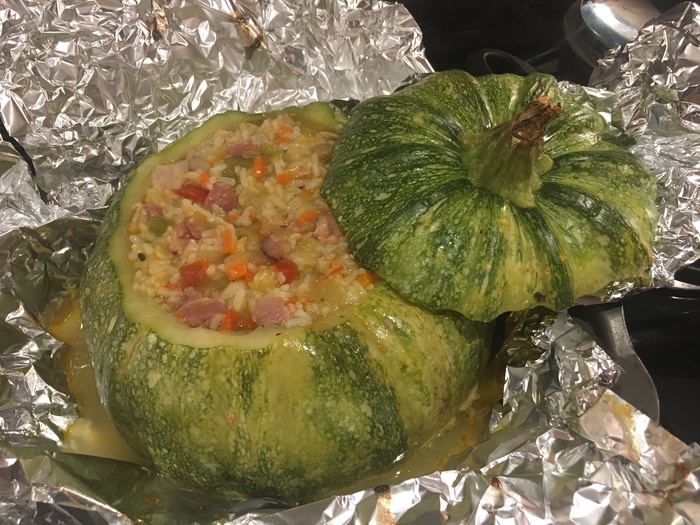
The above received the thumbs up from our household, and hopefully may allow you to look at those outsized vegetables a little differently in future rather than just feeding them to the chickens etc.....
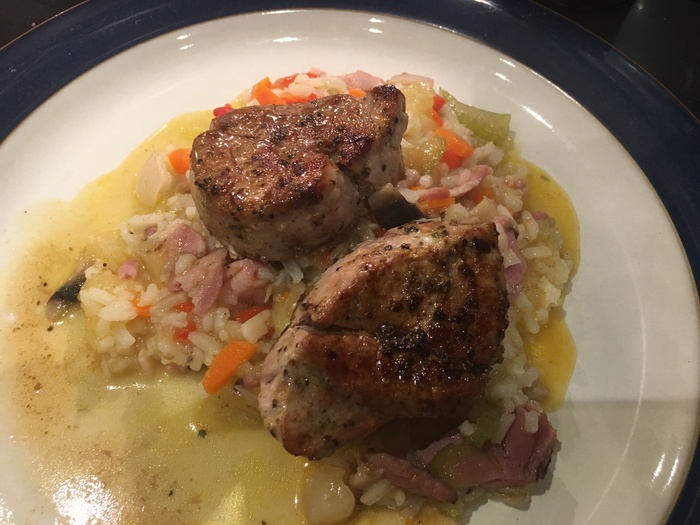
06th October 2017
In: Project 63

Regrettably, looking after an allotment is a real commitment and when it comes to vacations, despite the best efforts of all your colleagues, somethings get missed. Project 63 was no exception in September, and despite continuing deliveries of vegetables to our chosen charities, several of our courgettes were found hiding under the foliage on our return. Now the suggestion is, when your chosen veggie passes an optimum size it loses its flavour and seem to be jettisoned. I was determined to prove our king size vegetables still had plenty to offer and cooked up one of our medicine sized courgettes to prove the point. If you are interested, for ordinary sized veg too, you will need:
Olive Oil
smokey bacon
onions, carrots, peppers, celery and garlic, all grown on the allotment of course,
salt and pepper.
two chicken stock cubes
6 ounces rice ( for three people)

First and foremost decapitate the courgette (Image above) and then carefully relieve it of all the seeds and 'mushy type' middle area. Then scoop out all of the flesh so you are left with a hollowed out courgette.

Roughly chop all the vegetables and bacon. in a hot saucepan (quite large in this case) heat a tablespoon or two of olive oil and saute the onion until it is soft. Then add the roughly cut small pieces of bacon) and once cooked add carrots (very finely chopped), celery and peppers together with all the excavated courgette and cook until the carrots are soft. You will have quite a moist pot of food due to the water in the courgette at this point which is fine. Once this is all dealt with and suitably cooked add the bashed and finely chopped garlic and leave lightly on the ring for approx 3-4 minutes and stir in the two chicken stock cubes until they are completely dissolved, adding seasoning to taste.
whilst this is all taking place, boil up 6 ounces rice (or appropriate quantity for the mouths being tempted. Wash through hot water to remove any starch, and then add to your above mix and stir in, and again cook through for a short period.
Place the hollowed out courgette and lid in boiling water for about 3-4 minutes or slightly longer, then drain and place on top of baking foil, criss crossed in the bottom of a baking tray and then add all of the mix, wrap up tightly with the foil, and put in the oven approx 160 degrees for half an hour or slightly longer.
When ready, remove from the oven, and dish up. The longer the initial simmering process of the empty courgette, or the stay in the oven the softer the outer shell becomes, and it is truly just like a soft marrow or courgette at this point and very tasty. Serve with your chosen meat, in our case we coated and seared medallions of pork with a salt and pepper mix, cooked until just loosing its pink tint, leaving a moist piece of meat to accompany our king sized stuffed courgette. (in the end there was sufficient courgette for two lunches the day after!!!)

The above received the thumbs up from our household, and hopefully may allow you to look at those outsized vegetables a little differently in future rather than just feeding them to the chickens etc.....

Project 63 update
14th July 2017
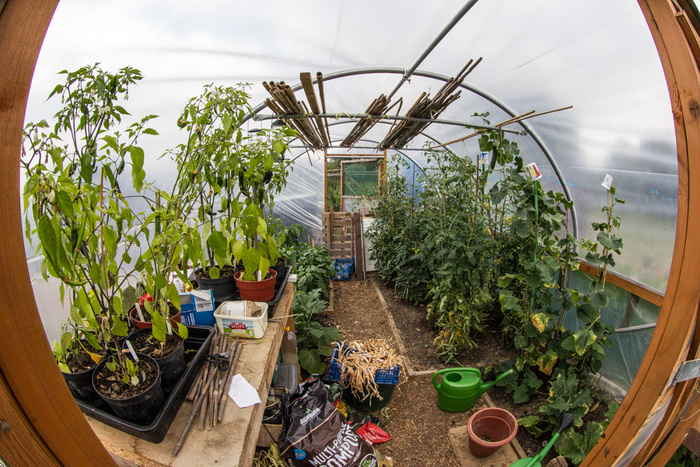
With the growing season now in full swing, project 63 is awash with green and the number of trugs of vegetables being delivered to our charities is gradually increasing.
The courgettes continue to crop profusely, with four different varieties being grown this year. The Varieties are All green burst, Tondo Chiaro di Pizza, Floridor F1, and Black Beauty. The first early potatoes have now been harvested, and apart from those speared by my fork are looking good.
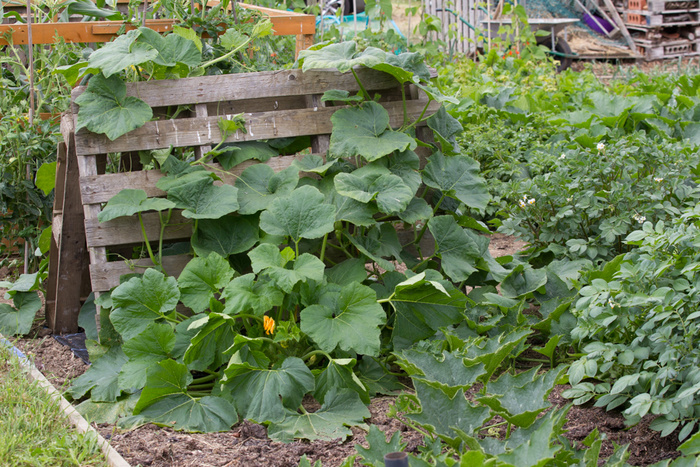
Three different varieties of squash are being tried, the two new varieties being Rolet and Yellow Scallop, all of which seem to be growing well, and the two raised beds of Mooli, Radish, Chicory, Celtuce, Rocket and Carrots are equally producing for us.
The poly tunnel has three varieties of peppers growing, Italian Long, Arianne and Bell Boy, an assortment of tomatoes, aubergines, and some jalapeno's on the potting bench.
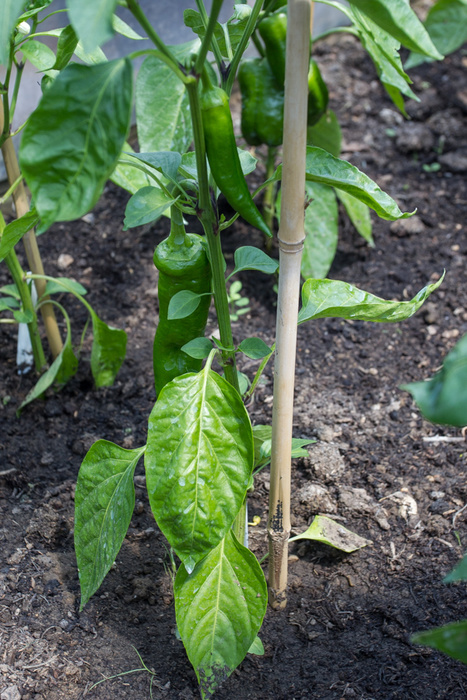
Leeks have been planted out to replace the now harvested Broad beens, with the only disappointment being the french beans, which seemed to be sabotaged by a fleet footed fiend that picked out all the beans shortly after planting. Next door to the leeks we have two different types of Celeriac which seem to be in good heart, the Giant Prague and Asterix F1.
Please don't forget we send to the charity a couple of times a week and if you do view you have excess produce and would wish to make a donation, please get in contact with Karen Lawrence.All and any donations are gratefully received.
14th July 2017
In: Project 63

With the growing season now in full swing, project 63 is awash with green and the number of trugs of vegetables being delivered to our charities is gradually increasing.
The courgettes continue to crop profusely, with four different varieties being grown this year. The Varieties are All green burst, Tondo Chiaro di Pizza, Floridor F1, and Black Beauty. The first early potatoes have now been harvested, and apart from those speared by my fork are looking good.

Three different varieties of squash are being tried, the two new varieties being Rolet and Yellow Scallop, all of which seem to be growing well, and the two raised beds of Mooli, Radish, Chicory, Celtuce, Rocket and Carrots are equally producing for us.
The poly tunnel has three varieties of peppers growing, Italian Long, Arianne and Bell Boy, an assortment of tomatoes, aubergines, and some jalapeno's on the potting bench.

Leeks have been planted out to replace the now harvested Broad beens, with the only disappointment being the french beans, which seemed to be sabotaged by a fleet footed fiend that picked out all the beans shortly after planting. Next door to the leeks we have two different types of Celeriac which seem to be in good heart, the Giant Prague and Asterix F1.
Please don't forget we send to the charity a couple of times a week and if you do view you have excess produce and would wish to make a donation, please get in contact with Karen Lawrence.All and any donations are gratefully received.
Radio Silence broken - Plots in bloom
04th June 2017
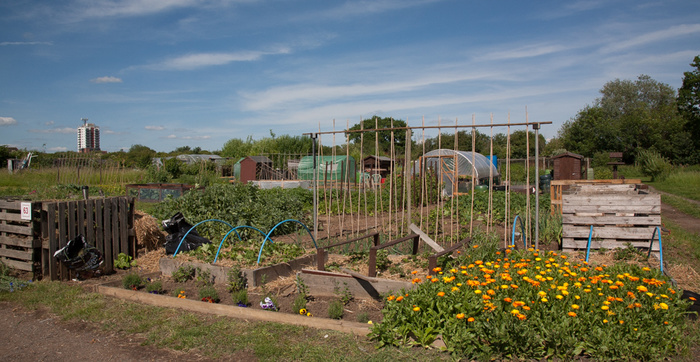
It's been a while since the last post to the project 63 site, and despite the 'radio silence' there has been quite a lot taking place. All around the site plots are looking good with all the endeavours of the owners, with splashes of colour and swathes of green as the growing season gets into full swing.
In terms of project 63, decisions have been taken in terms of the crops for this season, and the first trug of vegetables has already been readily accepted on behalf of the homeless, one of the two charitable organisations we plan to support.
Aside of broad beans (which in the main took well and are now cropping) the onions - which don't look that great, and garlic which appears in good shape, an extra bed of strawberries are being cultivated this year (last year one bed used to grow carrots, celtuce and later a small crop of Mooli).
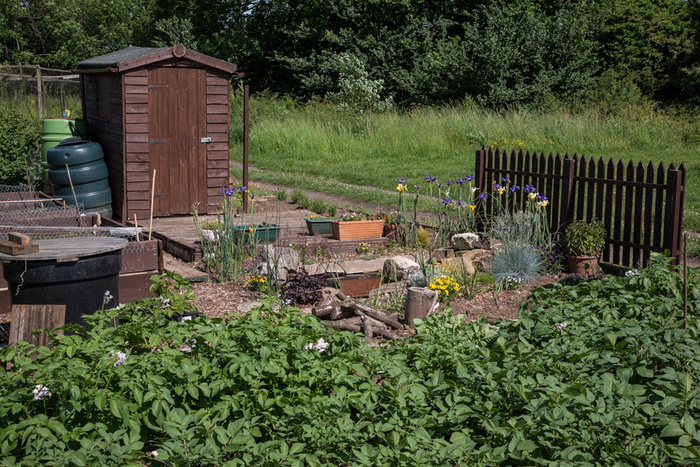
Potatoes were planted over a month ago, and these have now been complimented with several different varieties of courgettes, some which cropped exceptionally well last year, plus a couple of others that we are trying, and a variety of squashes. we have borrowed and idea from Darryl in terms of two pallets locked together to encourage the squashes to grow up and are hoping that we can produce as prolifically as he seems to manage!
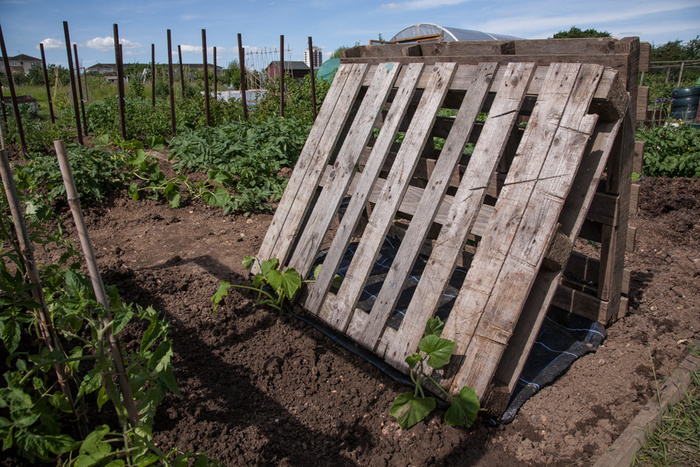
Sweet corn is in the cage (having cleared out a veritable forest of weeds), and the poly tunnel plays host to various tomatoes, cucumbers, aubergines and an assortment of peppers.
The two larger raised beds kindly built by the community payback scheme have been topped up with compost and sewn with various varieties of carrots, Radicchio, Rocket, and in the other Fennel, Celtuce, Mooli, and various different radishes. The beds have been covered over very crudely with some chicken wire so that as far as possible we can avoid any interference, and heavily watered.
The wildlife area is encouraging, looks good thanks to the artistry of Karen's planting, and teaming with wildlife which we hope will mature and provide an army of predators to keep the dreaded slug and snail population under control.
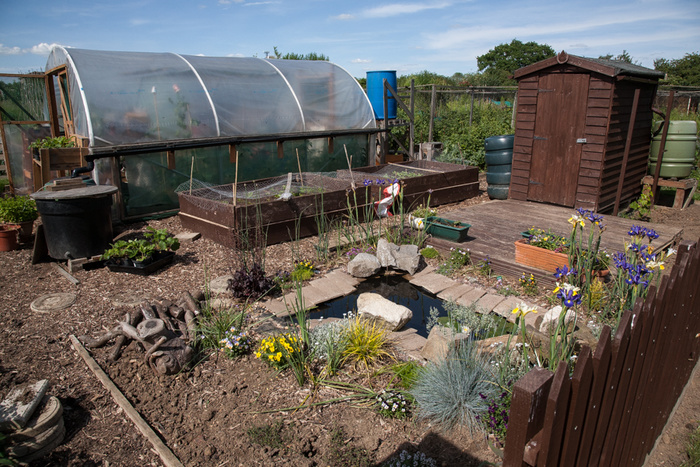
Finally, we have planted several rows of beetroot, parsnips (some of which have struggled) and this year are experimenting with two types of celeriac.
So pretty busy, despite the lack of posts on the website. Please don't forget, if you have additional fruit and vegetables that maybe excess to requirement, to contact Karen or Ray Lawrence if you would like to donate to the two charity organisations we are supporting this year.
04th June 2017
In: Project 63

It's been a while since the last post to the project 63 site, and despite the 'radio silence' there has been quite a lot taking place. All around the site plots are looking good with all the endeavours of the owners, with splashes of colour and swathes of green as the growing season gets into full swing.
In terms of project 63, decisions have been taken in terms of the crops for this season, and the first trug of vegetables has already been readily accepted on behalf of the homeless, one of the two charitable organisations we plan to support.
Aside of broad beans (which in the main took well and are now cropping) the onions - which don't look that great, and garlic which appears in good shape, an extra bed of strawberries are being cultivated this year (last year one bed used to grow carrots, celtuce and later a small crop of Mooli).

Potatoes were planted over a month ago, and these have now been complimented with several different varieties of courgettes, some which cropped exceptionally well last year, plus a couple of others that we are trying, and a variety of squashes. we have borrowed and idea from Darryl in terms of two pallets locked together to encourage the squashes to grow up and are hoping that we can produce as prolifically as he seems to manage!

Sweet corn is in the cage (having cleared out a veritable forest of weeds), and the poly tunnel plays host to various tomatoes, cucumbers, aubergines and an assortment of peppers.
The two larger raised beds kindly built by the community payback scheme have been topped up with compost and sewn with various varieties of carrots, Radicchio, Rocket, and in the other Fennel, Celtuce, Mooli, and various different radishes. The beds have been covered over very crudely with some chicken wire so that as far as possible we can avoid any interference, and heavily watered.
The wildlife area is encouraging, looks good thanks to the artistry of Karen's planting, and teaming with wildlife which we hope will mature and provide an army of predators to keep the dreaded slug and snail population under control.

Finally, we have planted several rows of beetroot, parsnips (some of which have struggled) and this year are experimenting with two types of celeriac.
So pretty busy, despite the lack of posts on the website. Please don't forget, if you have additional fruit and vegetables that maybe excess to requirement, to contact Karen or Ray Lawrence if you would like to donate to the two charity organisations we are supporting this year.
A Cunning Plan?
20th February 2017
I can’t quite believe that almost a year has passed since my one and only Baldrick moment, (never to be repeated I may add) and a cunning plan was hatched for the Association to take on plot 63 from the charity Essex Youth Build, who sadly had to relinquish the site.
That very early laissez faire approach of how difficult can it possibly be, replaced with weeks and weeks of digging, weeding, and then endless watering, proved that tending what initially seemed to be a reasonably irrelevant sized piece of land, which gradually turned into a veritable jungle of growth, required not inconsiderable attention and effort.
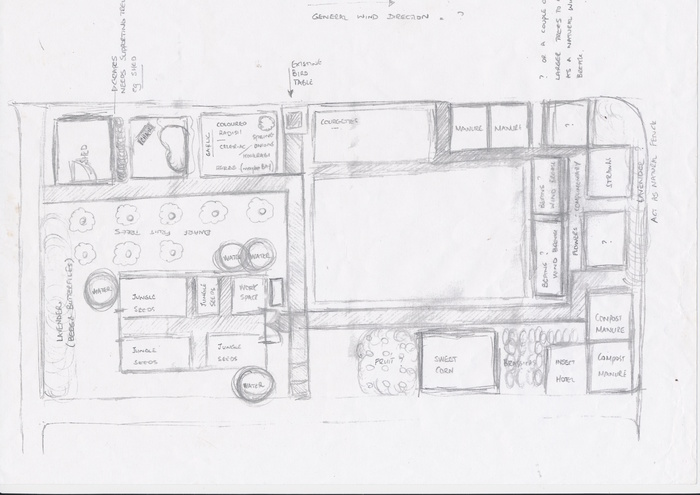
On the allotment website and in most good books, it advises the new plot holder to carefully consider a plan of attack in terms of how to tackle the task in hand, and whilst planning was never one of my strengths, including cunning plans as it turns out, several initial sketches were drawn in terms of ideas for the plot which measures some 80 x 30ft.
Several initial iterations of the plot were drawn, with a view of where to place compost bins, a shed, pathways, together with an initial plan of attack in terms of what to grow, and where.
If you have been following the project 63 blog on the web site, it will be noticable that over a period of 10 months, the plot has gradually transformed into something that vaguely mirrors the original drawings, with a shed, decking, wildlife area, compost bins and marked pathways all being added.
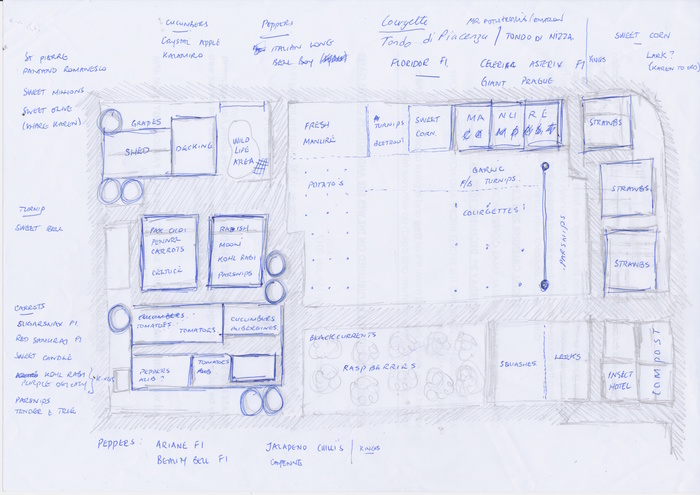
Some of the original ideas have been slightly modified; the area directly between the poly tunnel and shed being targeted as an area for dwarf fruits, which has now been shelved on the basis that the site has a community orchard already, and that perhaps a more productive use of the area would be raised beds for vegetable production.
Those original plans remain crucial; they provided a template to tackle the initial development of the site, and as we now approach a second growing season, these diagrams are being used to identify where we grew everything last year so that we can rotate our crops for year 2, and so forth.
Equally over the winter months, the time is being used to tidy up the plot, fix various borders, or dig and place perimeter boarding, plus essential tasks to ensure that growing season can be approached without too much 'spade work' to coin a phrase, as most of the effort already put in.
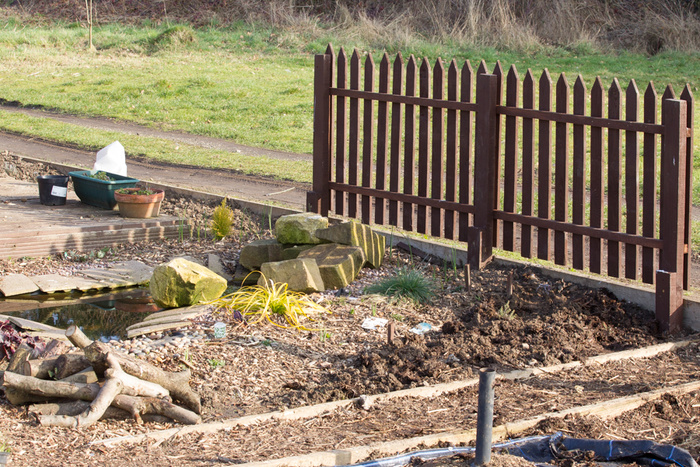
Finishing touches to the wildlife feature include the provision of a fence (for the writer a feat of engineering that borders on epic, despite the fact that the most careful of measurements, checked and double checked, still didn't quite match up), and repair and re location of the bird table.
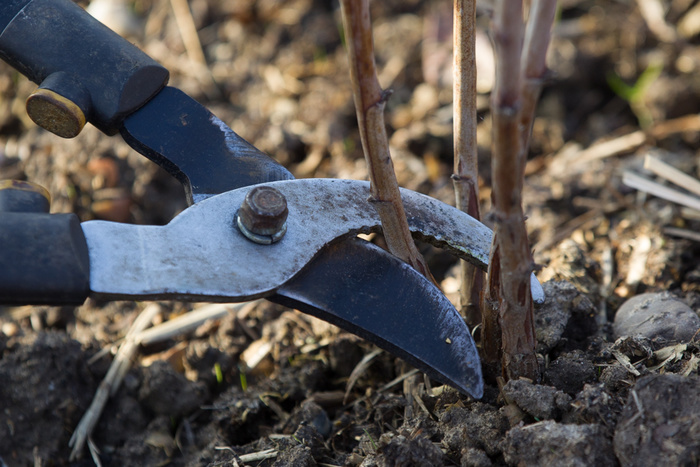
In addition to this the Autumn fruiting Raspberries have been pruned, close to ground level to stimulate and promote growth for this year, and the three original raised beds have seen the introduction of further strawberry plants, well manured. The Rhubarb, kindly donated by Karen seems to have survived the trauma of being dug up and re housed, and much to the former's chagrin, the broad beans planted seem to be progressing.
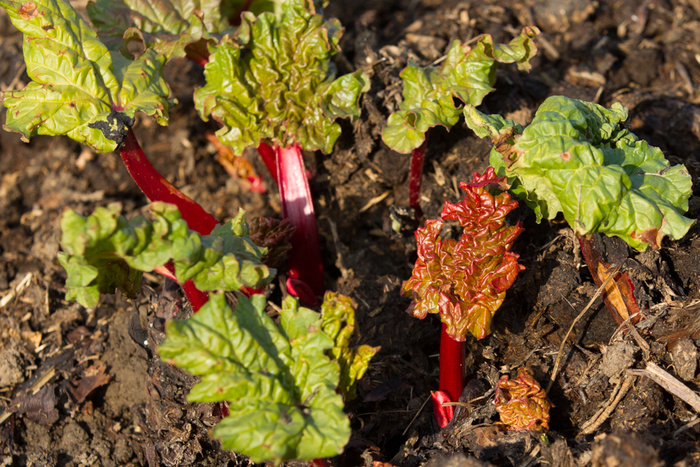
That's just about it for this update to the project, and it seems that the cunning plan whilst not particularly cunning, is progressing reasonably well.
20th February 2017
In: Project 63
I can’t quite believe that almost a year has passed since my one and only Baldrick moment, (never to be repeated I may add) and a cunning plan was hatched for the Association to take on plot 63 from the charity Essex Youth Build, who sadly had to relinquish the site.
That very early laissez faire approach of how difficult can it possibly be, replaced with weeks and weeks of digging, weeding, and then endless watering, proved that tending what initially seemed to be a reasonably irrelevant sized piece of land, which gradually turned into a veritable jungle of growth, required not inconsiderable attention and effort.

On the allotment website and in most good books, it advises the new plot holder to carefully consider a plan of attack in terms of how to tackle the task in hand, and whilst planning was never one of my strengths, including cunning plans as it turns out, several initial sketches were drawn in terms of ideas for the plot which measures some 80 x 30ft.
Several initial iterations of the plot were drawn, with a view of where to place compost bins, a shed, pathways, together with an initial plan of attack in terms of what to grow, and where.
If you have been following the project 63 blog on the web site, it will be noticable that over a period of 10 months, the plot has gradually transformed into something that vaguely mirrors the original drawings, with a shed, decking, wildlife area, compost bins and marked pathways all being added.

Some of the original ideas have been slightly modified; the area directly between the poly tunnel and shed being targeted as an area for dwarf fruits, which has now been shelved on the basis that the site has a community orchard already, and that perhaps a more productive use of the area would be raised beds for vegetable production.
Those original plans remain crucial; they provided a template to tackle the initial development of the site, and as we now approach a second growing season, these diagrams are being used to identify where we grew everything last year so that we can rotate our crops for year 2, and so forth.
Equally over the winter months, the time is being used to tidy up the plot, fix various borders, or dig and place perimeter boarding, plus essential tasks to ensure that growing season can be approached without too much 'spade work' to coin a phrase, as most of the effort already put in.

Finishing touches to the wildlife feature include the provision of a fence (for the writer a feat of engineering that borders on epic, despite the fact that the most careful of measurements, checked and double checked, still didn't quite match up), and repair and re location of the bird table.

In addition to this the Autumn fruiting Raspberries have been pruned, close to ground level to stimulate and promote growth for this year, and the three original raised beds have seen the introduction of further strawberry plants, well manured. The Rhubarb, kindly donated by Karen seems to have survived the trauma of being dug up and re housed, and much to the former's chagrin, the broad beans planted seem to be progressing.

That's just about it for this update to the project, and it seems that the cunning plan whilst not particularly cunning, is progressing reasonably well.
A Christmas List of Surprises?
01st January 2017
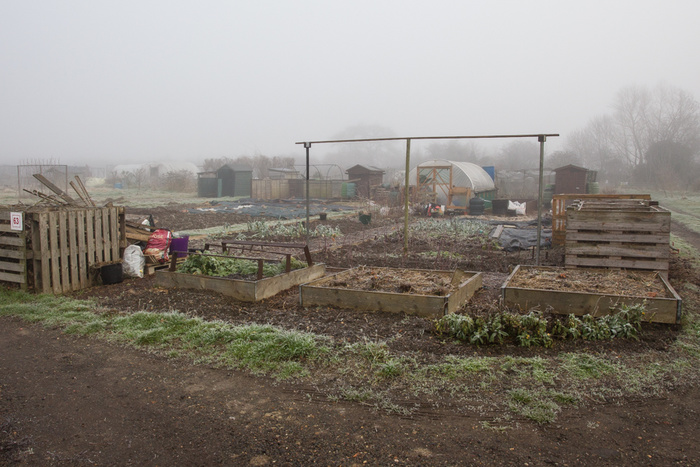
The period between Christmas and new year was not one that I expected to set foot on a frost and fog bound allotment, however, the powers that be had plans for the morning, which included one or two surprises – my Christmas gifts. I was positive that my Christmas list contained many things that I wanted, most of which seem to have been supplanted with other gifts that may have been the bright idea of ‘Mrs Claus’, and wholly more practical in relation to project 63. So the host of computer peripherals, photographic accessories, and one or two articles of clothing, seem to have been disguised as 8 lengths of 2x2 wood, wood stain, innumerable bags of compost, wire and ratchets for training fruit along the cut down 2x2, and other such accessories, including the equivalent number of post holders to be driven into the ground.
The general consensus seems to be that the fresh air and exercise will do me good! All I seem to recall from my exploits in 2016 was constant back ache, a snuffly nose, and the ability to be on the site most weekends, some in conditions that most wouldn’t contemplate drawing the curtains for let alone venturing out in. The phrase little and often seems to have been replaced with right away and all at once!
On a very cold frost laden morning, the 16 ft lengths of wood were cut and stained (need a second coat) in preparation for training the raspberries that had been dug up pre - Christmas and gently heeled in waiting for their new home to be turned over and manured. A couple of extra posts are required as I plan to grow a couple of grapes, a white and a red, which were actually on the list of requirements that Mrs Claus operated with for the festive period. Both are planned for the side of the shed and wildlife area, which is south facing where they should hopefully prosper.
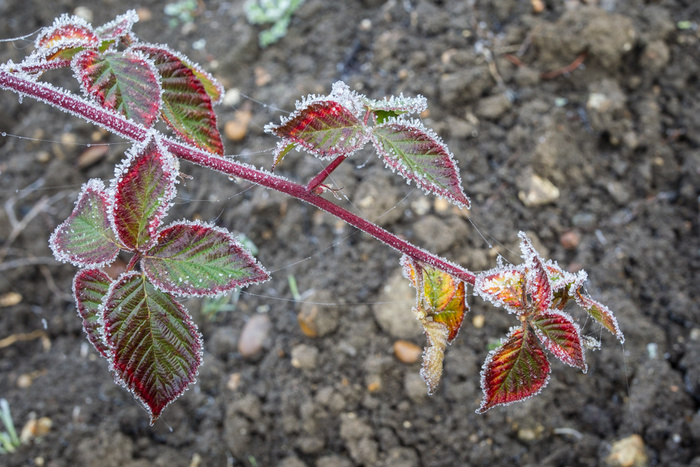
Having considered the successes and failures from the initial project 63 foray, seeds have been ordered for 2017, with the emphasis on those plants that seemed to prosper well, with one or two different varieties to mix things up a little. The intention is to also read some of the instructions this year to avoid the same (easy to make) errors from last year, where the Peruvian cucumber rather overtook the poly tunnel and supressed virtually everything else planted. They apparently can grow in excess of 40ft, and therefore planting 3 in the space of 3 ft now seems a little rash, and more importantly heralded no product.
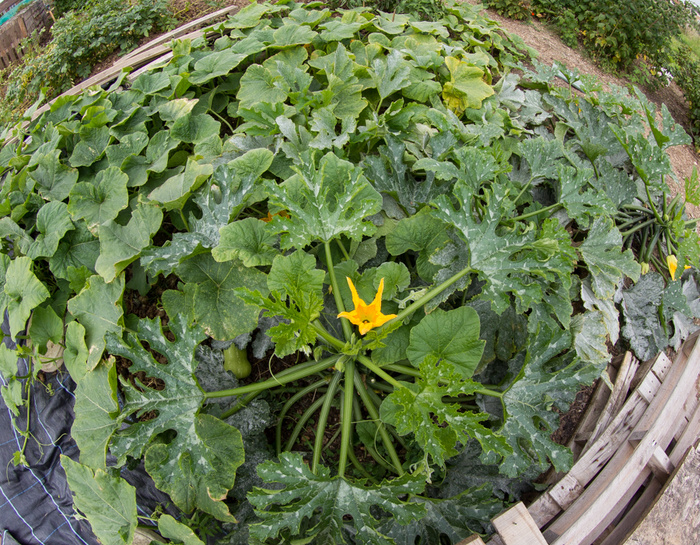
I am also hoping that the world of fruit and vegetable growing is unlike the world of high finance, and that past performance can be an indicator of future success. There were several veggies that performed really well, specifically some of the courgettes which produced and produced, the Psycho Mira and early potatoes, squashes, and would like to view that we can replicate these successes in 2017.
With almost a years experience behind us producing regular trugs of vegetables for our chosen charity, we are considering whether we add a further charity to our donations for 2017. Of course much depends on how successful we are growing the produce, however, with some valuable lessons learnt, the hope is to improve on what was achieved in 2016.
Project 63 remains as it is described, a project, with the principal rationale to grow and provide fruit and vegetables for charitable causes. The hope and aspiration remains to experiment with some varieties of crop that may not be considered by most.
Finally, During 2016 the project has had considerable assistance from various quarters, not least our neighbour Chris, the Community Payback Scheme, Derek, Peter, Daryll and others, for which we are enormously grateful.
01st January 2017
In: Project 63

The period between Christmas and new year was not one that I expected to set foot on a frost and fog bound allotment, however, the powers that be had plans for the morning, which included one or two surprises – my Christmas gifts. I was positive that my Christmas list contained many things that I wanted, most of which seem to have been supplanted with other gifts that may have been the bright idea of ‘Mrs Claus’, and wholly more practical in relation to project 63. So the host of computer peripherals, photographic accessories, and one or two articles of clothing, seem to have been disguised as 8 lengths of 2x2 wood, wood stain, innumerable bags of compost, wire and ratchets for training fruit along the cut down 2x2, and other such accessories, including the equivalent number of post holders to be driven into the ground.
The general consensus seems to be that the fresh air and exercise will do me good! All I seem to recall from my exploits in 2016 was constant back ache, a snuffly nose, and the ability to be on the site most weekends, some in conditions that most wouldn’t contemplate drawing the curtains for let alone venturing out in. The phrase little and often seems to have been replaced with right away and all at once!
On a very cold frost laden morning, the 16 ft lengths of wood were cut and stained (need a second coat) in preparation for training the raspberries that had been dug up pre - Christmas and gently heeled in waiting for their new home to be turned over and manured. A couple of extra posts are required as I plan to grow a couple of grapes, a white and a red, which were actually on the list of requirements that Mrs Claus operated with for the festive period. Both are planned for the side of the shed and wildlife area, which is south facing where they should hopefully prosper.

Having considered the successes and failures from the initial project 63 foray, seeds have been ordered for 2017, with the emphasis on those plants that seemed to prosper well, with one or two different varieties to mix things up a little. The intention is to also read some of the instructions this year to avoid the same (easy to make) errors from last year, where the Peruvian cucumber rather overtook the poly tunnel and supressed virtually everything else planted. They apparently can grow in excess of 40ft, and therefore planting 3 in the space of 3 ft now seems a little rash, and more importantly heralded no product.

I am also hoping that the world of fruit and vegetable growing is unlike the world of high finance, and that past performance can be an indicator of future success. There were several veggies that performed really well, specifically some of the courgettes which produced and produced, the Psycho Mira and early potatoes, squashes, and would like to view that we can replicate these successes in 2017.
With almost a years experience behind us producing regular trugs of vegetables for our chosen charity, we are considering whether we add a further charity to our donations for 2017. Of course much depends on how successful we are growing the produce, however, with some valuable lessons learnt, the hope is to improve on what was achieved in 2016.
Project 63 remains as it is described, a project, with the principal rationale to grow and provide fruit and vegetables for charitable causes. The hope and aspiration remains to experiment with some varieties of crop that may not be considered by most.
Finally, During 2016 the project has had considerable assistance from various quarters, not least our neighbour Chris, the Community Payback Scheme, Derek, Peter, Daryll and others, for which we are enormously grateful.